| |||||||
 |
| Search this Thread |  509,206 views |
| | #1 |
| Distinguished - BHPian  Join Date: Aug 2014 Location: Delhi-NCR
Posts: 4,315
Thanked: 71,982 Times
| Indian Naval Aviation - Air Arm & its Carriers Indian Naval Aviation - Air Arm and its Carriers This is brief narrative on Indian Naval Aviation is dedicated to the fine officers and sailors who serve in this Arm. I welcome insights, experiences and corrections from the fellow BHPians who serve with the Armed Forces and do so much for the rest of us. Their inputs will undoubtedly enrich this photo essay. My compliments to the founders and moderators of Team BHP for running such a clean and professional site which makes it a pleasure to place this photo essay on Team BHP Glossary: ASW - Anti-submarine Warfare; ASM - Anti-Ship Missile (also Air to Surface Missile); CATOBAR - Catapult Assisted Take-Off But Arrested Recovery (ie Landing); Dunking Sonar - a multi-use sonar immersed into the depths by a hovering helicopter to listen for submarines; Homing Torpedo - a guided torpedo; Depth Charge - a free fall underwater bomb (now normally dropped from the air); INS - Indian Naval Ship; Knots - 1 nautical mile per hour; Lo-Lo-Lo means the fighter flies its attack mission at low altitudes under the radar screen during all the stages - ingress, attack and egress LRMP - Long Range Maritime Patrol; Nautical mile = 1.852 kms, it is one minute of the arc measured along a meridian of the earth. Reheat - burning pure fuel in the hot jet exhaust of a naircraft engine causing explosive combustion with the residual oxygen in the exhaust and giving the aircraft a super thrust & acceleration for short durations Royal Navy -British Navy;SAM - Surface to Air Missile; SONAR (Sound Navigation and Ranging) - an acoustic device that locates underwater objects by pinging sound waves and listening to the echo - used for hunting and tracking submarines; Sonobouy - an expendable one timer use sonar dropped by aircraft; STOBAR - Short Take-Off But Arrested Recovery; STOVL - Short Take-Off & Vertical Landing; VTOL -Vertical Take Off & Landing; Reference & Sources mentioned at the end. Photo credits mentioned where known Hope you enjoy this photo essay as much as I have putting it together. I have tried to keep the jargon at a minimum and to make the narrative pleasant to read and not something that crawled out of an aircraft maintenance manual. Soon after independence the Indian Navy drew up plans for a Naval Air Arm complete with 2 light carriers. Not surprisingly ambition and hope ran ahead of the budgets. This was the time of the First 5 year Plan and understandably the nation had more pressing priorities. So it was decided to set up a fledgling Naval Air Arm to provide air to sea rescue, coastal reconnaissance, target towing and such other non-combat tasks to get our milk teeth cut on a modest budget. From those humble beginnings in 1953 Indian Naval Aviation has grown to the size of a mid-sized Air Force in its own right. This is the story of that journey of Naval Aviators with its moments of glory and challenges. BHPians, a pilot in any Navy is never called a pilot he (and now she too) is called an aviator. In the beginning…… 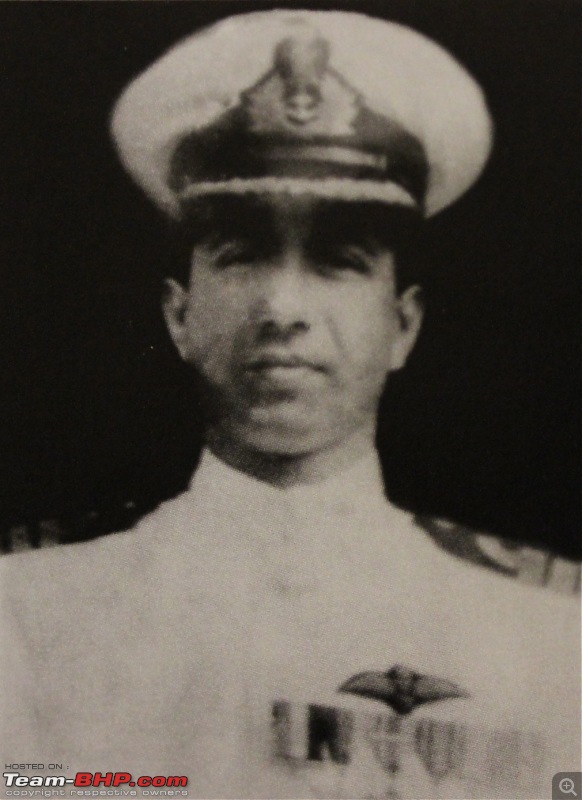 Photo 1: In the beginning there was YN Singh. Period. Rarely in the history of an Armed Force can you pinpoint a person or a date or an aircraft that marks the beginning. In the case of Indian Naval Aviation all three are possible. YN Singh was the only Indian Naval officer to train with the Royal Navy's Fleet Air Arm in the middle of World War II. And for 4 years he trained and flew with the Royal Navy from their carriers fighting the Germans and the Japanese shoulder to shoulder with his white British colleagues. He was the first Indian Naval aviator, the first Indian to land on a carrier, the first Indian (ever) to pilot a helicopter, the first Indian to qualify flying amphibious seaplanes and the first to command an Indian Naval Air Squadron. And for all this our beloved Indian bureaucracy wanted him to pay for his training as a pilot because it was undertaken, in the fog of war, without their approval and actually harassed him for some years!!  YN Singh later rose to be a Commodore and after retirement became the Bihar chief of the Communist Party of India! Sadly he is no longer with us. Photo Source @@ YN Singh later rose to be a Commodore and after retirement became the Bihar chief of the Communist Party of India! Sadly he is no longer with us. Photo Source @@A start with Shorts Sealand amphibians... 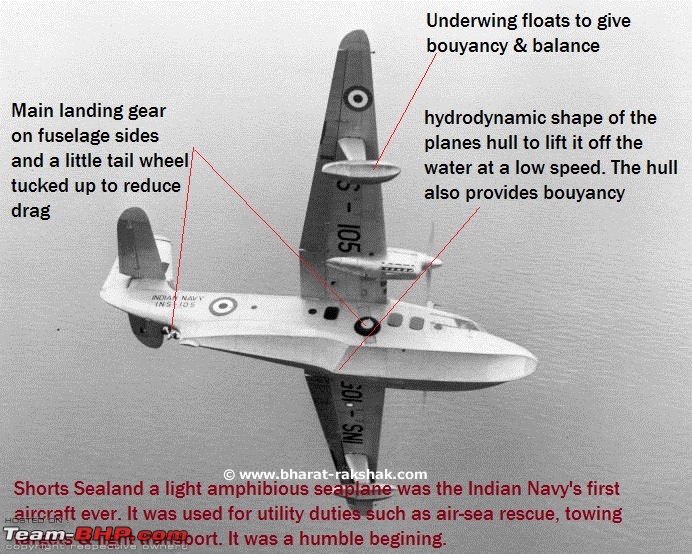 Photo 2A: So in 1953 the Navy commissioned into service the Shorts Sealand light amphibious aircraft under the command of Lieutenant Commander YN Singh. An amphibious aircraft, as the name suggests, is one that can land and take off from both water and land. The Sealand was a simple light aircraft - 42' length, 4100 kgs maximum take-off weight, 280 kmph sustained speed and powered by two 340 hp 6-in-line 9200 cc pistons. Compare that with a BMW 7 Li's 450 hp and top speed of well above 280kmph!! Photo Source Wikipedia 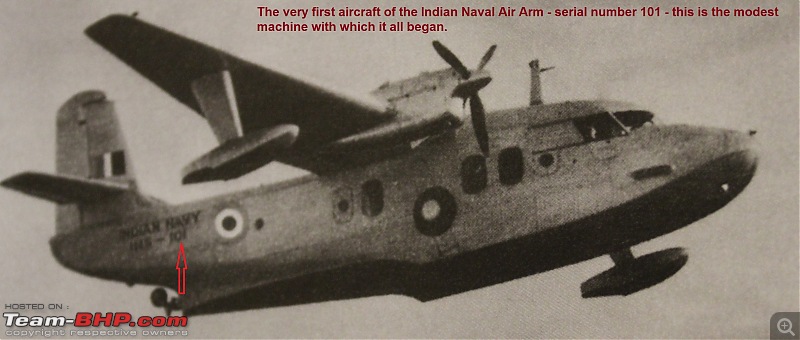 Photo 2B: Where YN Singh was clearly the first ever Naval aviator Sealand carrying tail number '101' was the first ever aircraft of Indian Naval Aviation. Moreover YN Singh flew 101!! Photo source @@ 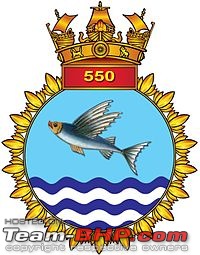 Photo 2C: 10 Sealands were purchased and formed Indian Naval Air Squadron 550 appropriately with a flying fish on its crest. The 550 Squadron today flies the Dornier 228 described later in photo 7H and 7I. Sealands served till 1965 having served their purpose of getting Naval Aviation established - by then carrier aviation had been firmly established in India. Photo source $$ Enter INS Vikrant, R11…..carrier aviation comes to Asia 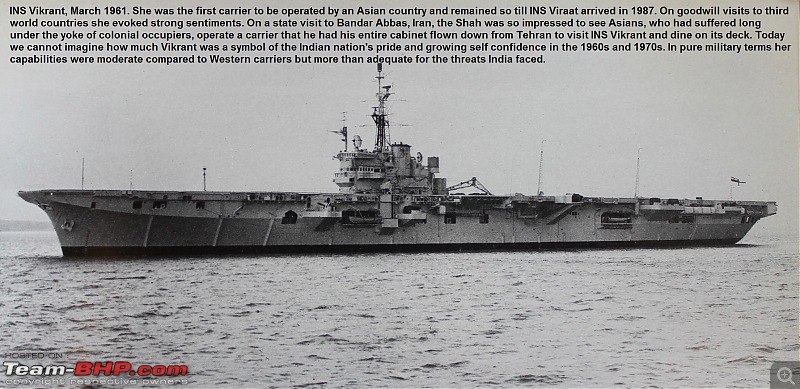 Photo 3A: On 4th March 1961 INS Vikrant (means 'Courageous') commissioned into the Indian Navy. She carried the pennant number R11. This photo was taken a few days before her commissioning. Vikrant was a Majestic class light carrier laid down in World War II and left 75% complete at war's end in 1945. She lay incomplete till the British offered her to us in 1957. At Rs 100 crores (US $200 million then; like $600 million today) the budget for her was hefty for those times. Lord Louis Mountbatten then Chief of the Royal Navy advised Nehru that without a carrier our Navy wouldn't amount for much and it takes a generation to develop carrier operating capabilities and this chance may not come again soon (and how right he was about that). Nehru being the visionary he was decided for the motion. Good for us because in the 54 years since 1961 there have been only 4 instances of a carrier being sold by one nation to another (other than the sale of INS Viraat and INS Vikramaditya to India). Nations that know how to design & build carriers usually don't like selling them hence our journey to design and build our own (see Photo 13A below). Photo source $$ 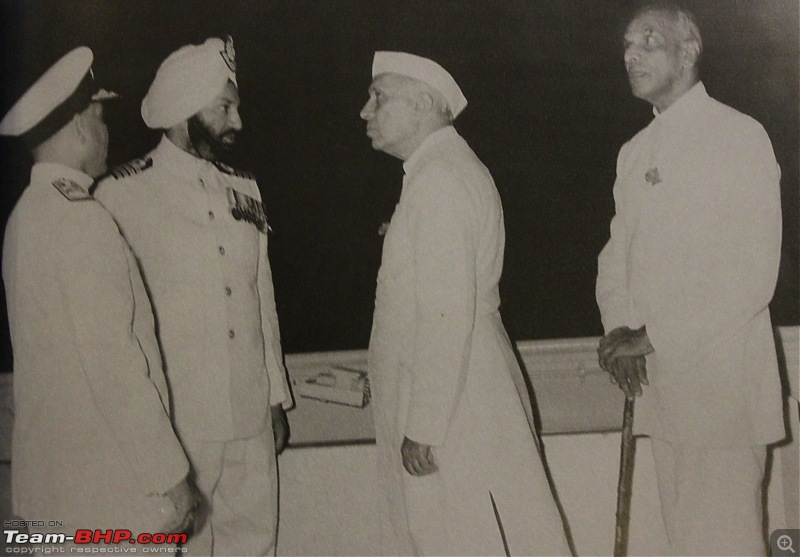 Photo 3B: Pandit Nehru on board Vikrant the day she docked at Ballard pier, Mumbai, in 1961. The Naval Dockyard did not have a pier big enough for her 700 foot length. The Army Corps of Engineers built a special pier for her to cater not only for her length but also logistics of fuel, food & ammunition and the unique requirement of being able to lift aircraft onto her deck from multi-axle trailers alongside. Captain Pritam Mahindroo the first commanding officer of Vikrant seen here with the Prime Minister. Captain Mahindroo second from left. Photo source $$ 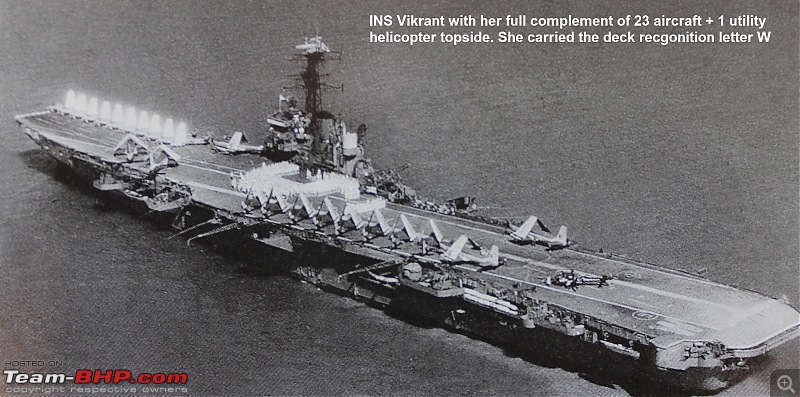 Photo 3C: INS Vikrant - Displacement 19500 tonnes; Top Speed 24.5 knots (45 kmph), sustained speed 23 knots (42 kmph), range ~6000 nautical miles (~11,000 km) at full speed or ~12,000 nautical miles (~22,000 km) at a slow cruise of 14 knots (~26 kmph) with reserves. Aircraft complement around 21 though at times she carried 23 even. Crew size ~1400. As originally built armament was basic in the form of 15 Bofors 40mm anti aircraft guns. She had several facilities needed to support long cruises including a surgery theatre, a barbers shop, a dental clinic, a library, a mini-prison (!) to name a few. In the 1960s and 1970s INS Vikrant was a name most school boys and families from middle class India would recognize instantly. Photo source ## 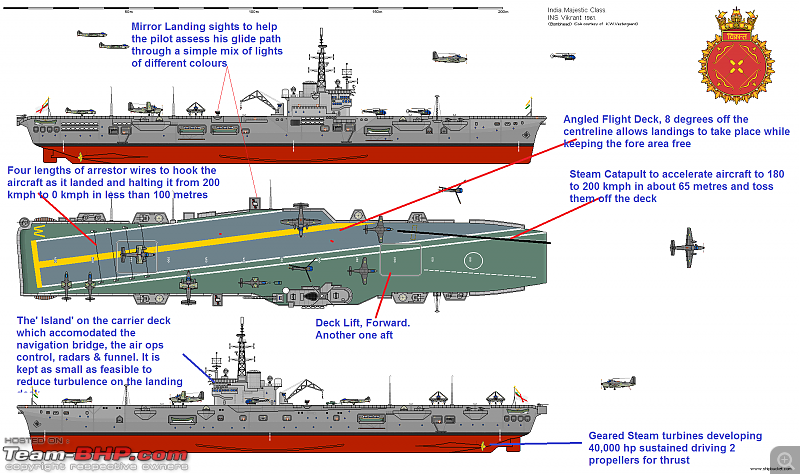 Photo 3D: Layout of INS Vikrant, as originally built, beautifully depicted above. Copyright K.W. Vestergaard 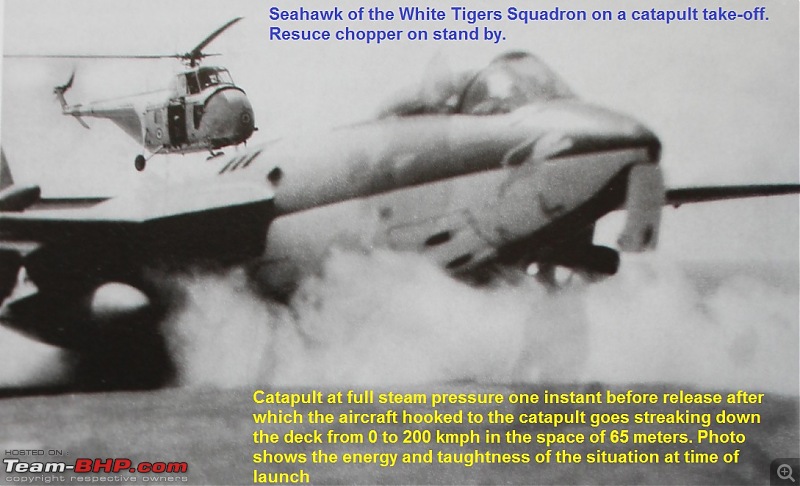 Photo 3E: Take-off from the limited space of a carrier deck is assisted by a catapult that is fired in a barrel driven by high pressure super heated steam much like a bullet is fired from a barrel by exploding gases. The aircraft is tied to the catapult hook and accelerates up to 160 to 200 kmph in the space of 65 metres. Landing is by hooking the tail hook of the aircraft onto one of the 4 arrestor wires which in turn are attached to hydraulic brakes - see Photo 4A and 5B. Photo source @@ Breguet Alize's - anti-submarine and electronic surveillance aircraft 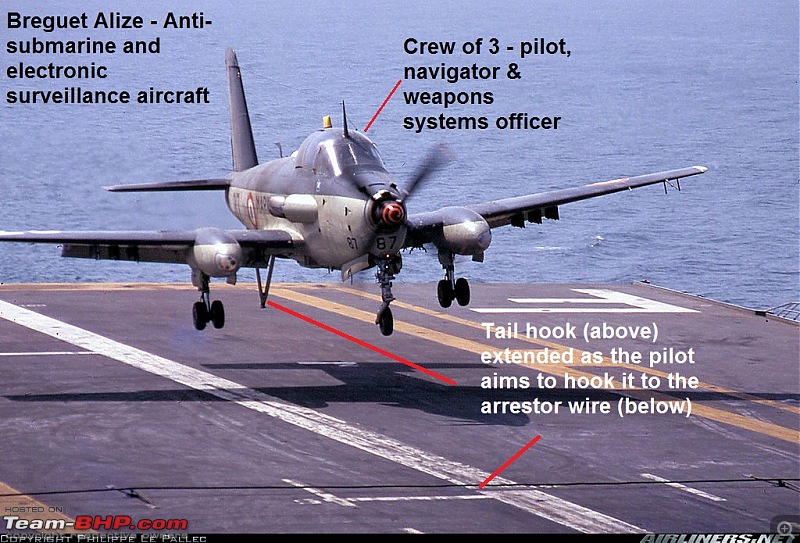 Photo 4A: In the 1960s and 1970s the INS Vikrant embarked two main types - the French Breguet Alize and the British Hawker Seahawk. Breguet is the name of the manufacturer and Alize the name of the specific aircraft type. Photo shows a Alize coming in to land with its tail hook extended to catch the arrestor wire. The Alize was a propeller driven anti-submarine and surveillance aircraft with an advanced electronics suite and a useful low altitude patrol endurance of 5 hours. Photo source Airliners.Net 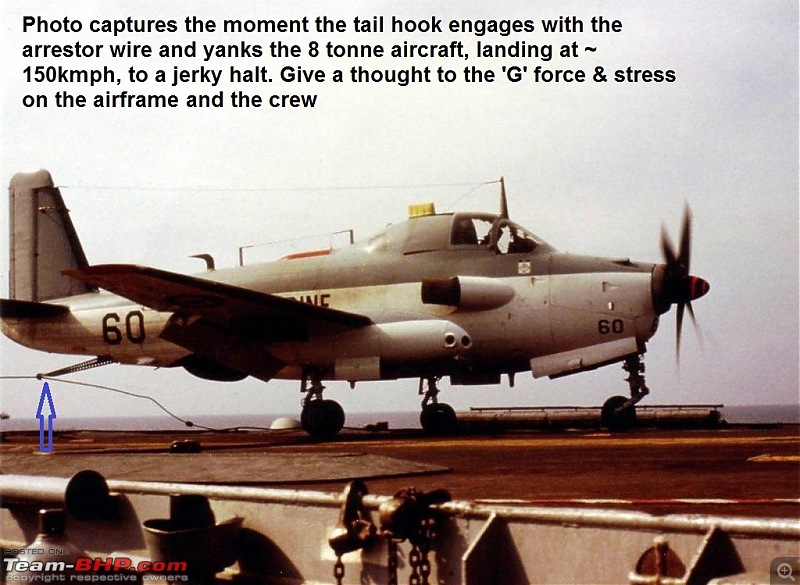 Photo 4B Tailhook engaged….. Photo source Wikipedia 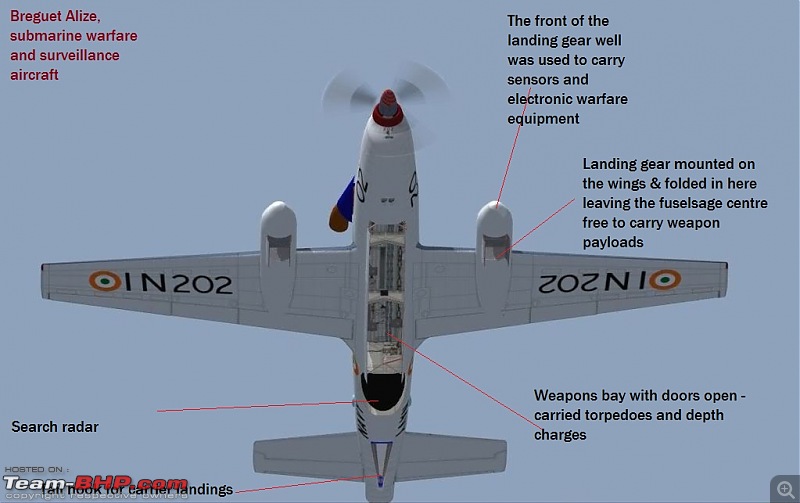 Photo 4C: A computer generated image of an Alize clearly illustrating its vital parts. The aircraft was powered by a 2100 hp Rolls Royce Dart turboprop, had a maximum speed of 520 kmph, range of 2500 kms and carried torpedoes, depth charges, bombs and rockets as its armament. Because of its advanced electronic surveillance suite the Alize was often used for electronic reconnaissance of our adversary's coasts & borders and monitoring enemy radars. A total of 14 Alize's were bought. They served in 1965, 1971 and the ill advised Indian foray into Sri Lanka 1987-89. 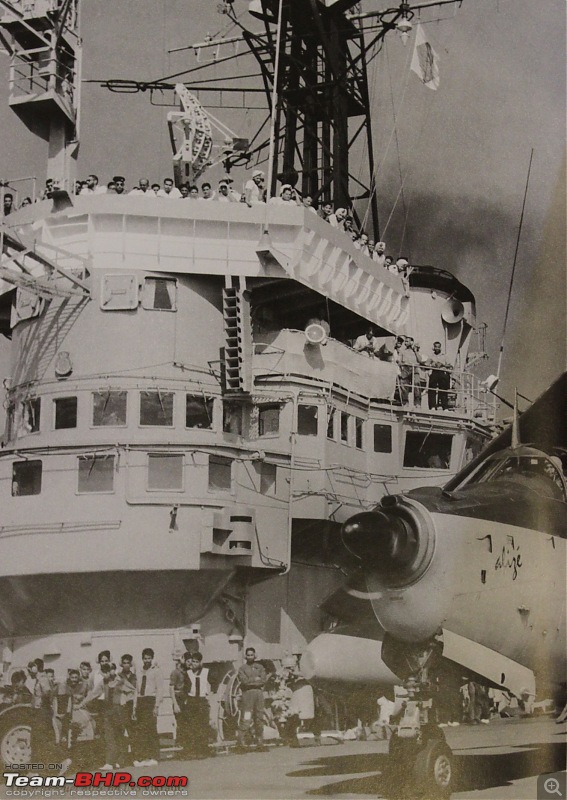 Photo 4D: Very first landing on Vikrant by an Alize of the Indian Navy. May 1961 off the coast of France. A part of the ship's company is out to have a good look at the new bird. The engine is still running as the aircraft taxis to its parking bay and the wings have just been folded prior to engine cut off. This first landing was by Lieutenant Commander Mihir Roy who later rose to head the Eastern Naval Command. In an emergency the Alize, with its excellent low speed handling, could actually takeoff, without the steam catapult, by running the full length of the 700 foot deck with the carrier steaming full speed into the wind to give those precious extra knots of wind to lift the aircraft and the pilot sending a prayer to the 'Pilot' above. Photo source @@ Hawker Seahawk - the first jet fighter 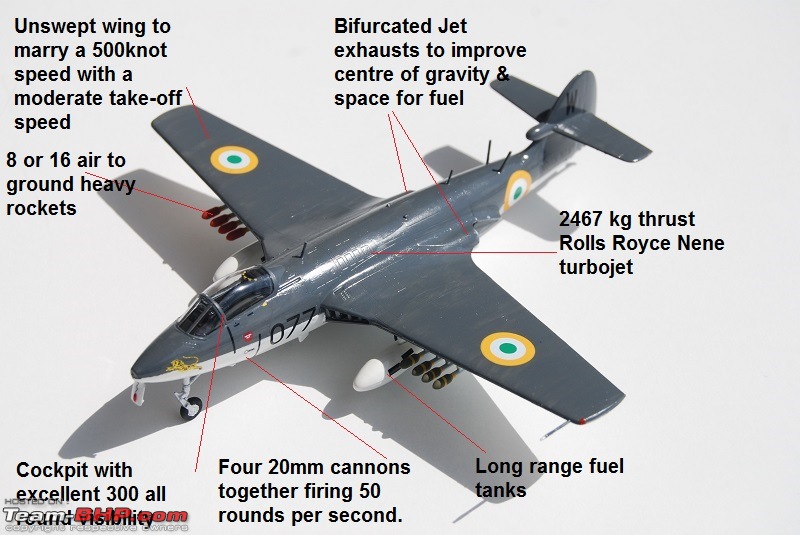 Photo 5A: The other stable mate on INS Vikrant, in the 1960s and 1970s was the British Hawker Seahawk a first generation fighter bomber which, unlike the Alize, was a little long in the tooth by the time Vikrant commissioned in 1961. The Seahawks however served us well till 1978. Capable of a top speed of 965 kmph it had a combat radius of ~370 kms with weapons and reserves. Typical weapons were air to ground rockets, iron bombs and the ubiquitous 20mm cannons. A total of 74 Seahawks (most second hand) were bought. You can read more on the Seahawk on http://www.team-bhp.com/forum/commer...dian-navy.html 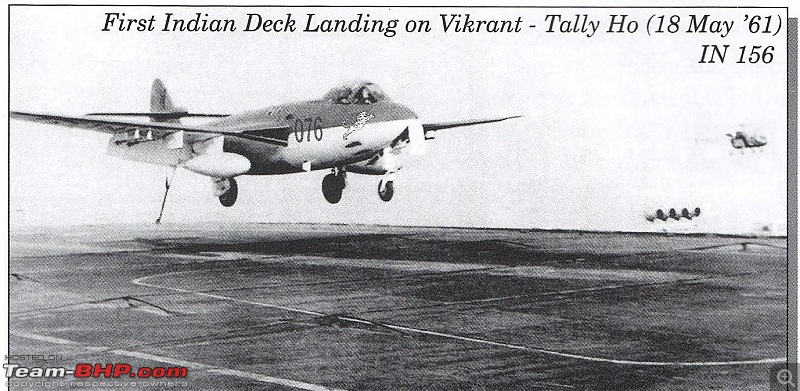 Photo 5B: First ever landing on INS Vikrant by any aircraft or pilot - Lieutenant RH Tahiliani coming in to log the first tail hook on an Indian carrier. You have now seen the first aviator, the first naval aircraft, the first carrier, the first naval squadron and the first landing on an Indian carrier. Photo source @@ In combat...INS Vikrant's finest hour, 1971 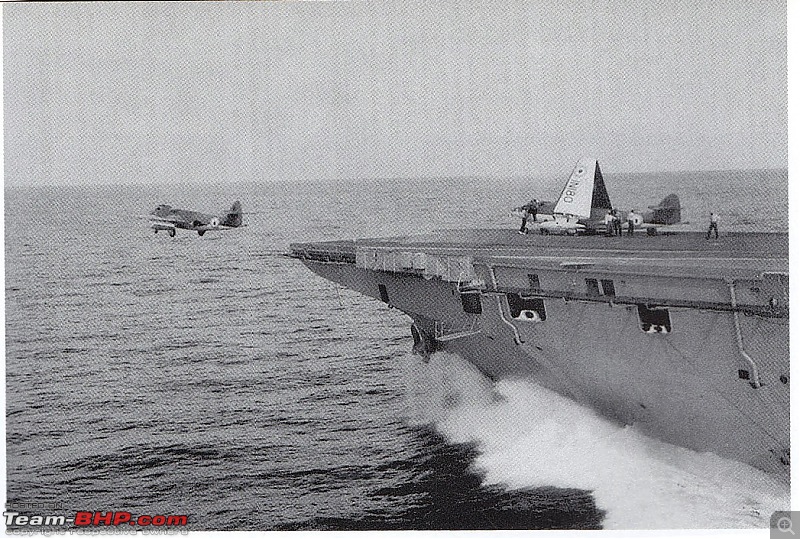 Photo 6A: In the 1971 operations off the coast of East Pakistan the Seahawks flew a few hundred sorties successfully attacking fuel storage facilities, airstrips, patrol boats, merchant shipping, anti-aircraft batteries and troop concentrations. The Commanding Officer of the Seahawk squadron, the White tigers, Lieutenant Commander SK Gupta was awarded the Maha Vir Chakra. Gupta is quite the maverick what in Bombay lingo will be called 'bindaas'. You can read an unusual anecdote on him in post #24 at http://www.team-bhp.com/forum/commer...dian-navy.html Photo source @@ 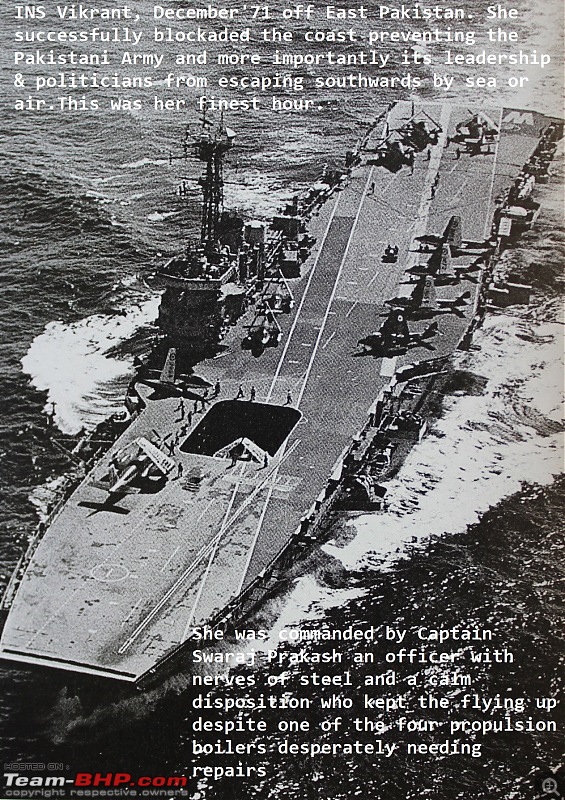 Photo 6B: INS Vikrant herself had quite story in December 1971. She slipped out to the Andamans weeks before hostilities commenced. The Pakistanis who were led to believe, through deceptive but convincing radio signals, that she was in Chennai or Vishakhapatnam sent their submarine Gazi to sink her. Radio operators of Vikrant were parked abroad an obsolete destroyer, INS Ranjit, busy sending signals as if from Vikrant - ordering aircraft ammo & spares, mimicking signals as if test flights were going on from the deck etc. We ensured our enemy knew the signaling fingerprints of Vikrant's radio operators. The ploy worked. The adversary fell for the oldest trick in the signalman's book. Gazi parked herself first at Chennai then Vishakhapatnam hunting for a carrier that was not there. She sank after an internal explosion probably by hitting one of the mines she had laid for INS Vikrant. INS Vikrant meanwhile steamed up to East Pakistan on 3rd December'71 and blockaded the coast completely. The full story can be read in post number #38 at http://www.team-bhp.com/forum/commer...dian-navy.html Photo source %% 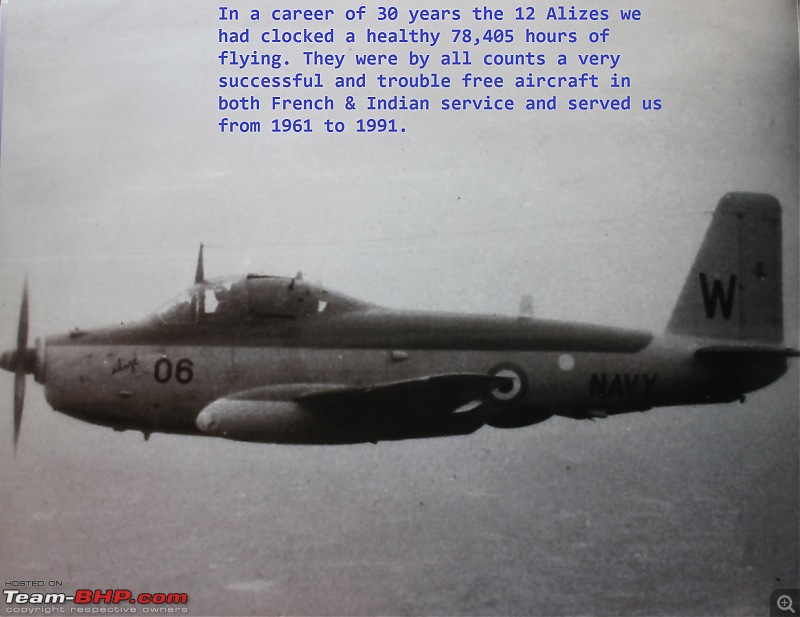 Photo 6C: In the 1965 operations against Pakistan the Alize's were used to track and map the exact position of enemy radars and the nature of their radar waves. This data was then used by the IAF to attack the pin-pointed radar stations. In the 1971 operations the Alize's operated mainly against East Pakistan sinking over 100,000 tonnes of coastal shipping, naval patrol boats and minesweepers. Eight operational Alize's carried out 291 sorties in 10 days against land and sea targets i.e. 3.5 combat missions per day per aircraft & crew. Because of their radar and navigation aids Alize's were capable of operating at night with precision and this capability was used to keep up a 24/7 pressure on the opposing forces. The crews of the Alize's won 6 Vir Chakras in '71. Photo source && Last edited by V.Narayan : 17th May 2015 at 09:33. |
| |  (28)
Thanks (28)
Thanks
|
| The following 28 BHPians Thank V.Narayan for this useful post: | .anshuman, Abhi99, Abhinav V, addyhemmige, ariesonu, AVR, digitalnirvana, Foxbat, Gannu_1, Gansan, GTO, HappyWheels, Insearch, JoseVijay, khoj, Knight Rider, Lobogris, manuc, moralfibre, MotoBlip, Myth_sx, NetfreakBombay, predatorwheelz, R2D2, sayakc, Scarlet_Rider, skanchan95, StarScream |
| |
| | #2 |
| Distinguished - BHPian  Join Date: Aug 2014 Location: Delhi-NCR
Posts: 4,315
Thanked: 71,982 Times
| Re: Indian Naval Aviation - Air Arm and its Carriers Long Range Maritime Patrol (LRMP) We'll take a break from carriers and look at the second leg of naval aviation the Long Range Maritime Patrol aircraft. Unlike borders on land which are well defined there are no borders at sea at least from a military point of view. And as the oceans occupy over 2/3rds of the planet vast areas need to be monitored for activity that might be adversarial. I wonder why we call our home planet Earth as it would be more appropriate to call it planet Sea! The best way to monitor the oceans quickly is through large slow flying aircraft that can stay aloft for hours and search the sea surface and under-surface for mischief makers. Enter the Long Range Maritime Patrol aircraft. In peace time these long range patrol aircraft are our first gate guardians for tracking shipping, non-State mischief makers, pirates, naval vessels of our adversaries and submarine intrusions.  Photo 7A: In the beginning we had a handful of Super Constellation piston engine ex-Air India aircraft that had minimal military aviation electronics (called avionics) and relied on Eyeball Mark 1 to search the seas and act as forward air controllers. The IAF transferred 5 of these aircraft to the Navy in 1975. The Super Connies may have lacked modern avionics but they had range and could patrol for 12 hours at a stretch or more and had a range with reserves of over 7000 kms. They were also old - about 18 to 20 years by this time and had a limited shelf life. The bass thunder of these turbo compound pistons was akin to the roar of a hundred Enfield Bullet motorcycles throttling up simultaneously. The shriller sound of a jet engine of today simply doesn’t carry the same royal thumping roar. Specifications - Maximum take off weight ~54.5 tonnes; Powerplant - 4 Wright turbo-compound piston engines, 3250hp maximum output each; Cruising speed ~480 kmph. Photo Source @@ 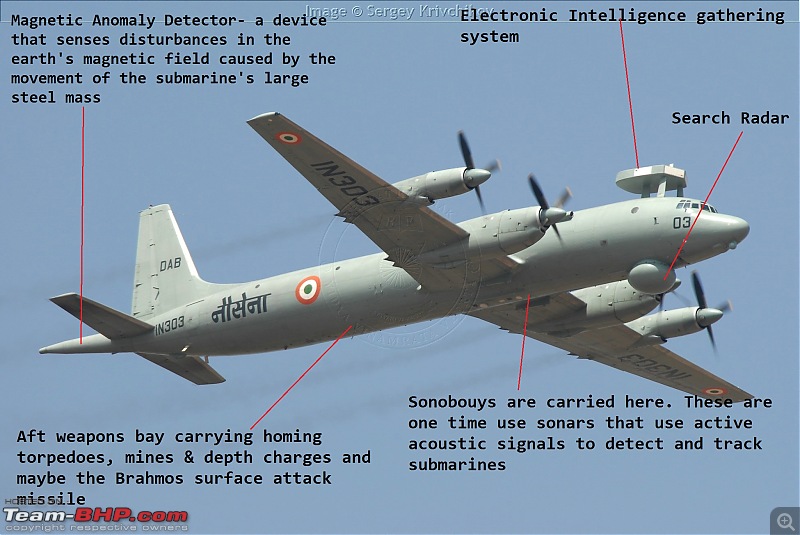 Photo 7B: The modern and capable Ilyushin IL-38 (NATO name 'May') LRMP from USSR entered service in 1977. We have maintained a fleet of 5 through to today. These have been modernized and today carry anti-submarine homing torpedoes, depth charges, Sea Eagle anti-ship missiles, mines and it is believed also the long range Brahmos which has a dual role of anti-ship and land attack. Powered by four Ivchenkov 4250 hp turbo-props these large 66 tonne machines have a patrol endurance of 13 hours and a weapon payload of 9000 kgs. The IL-38 has proved to be a reliable sturdy aircraft that has served for over 38 years and still has 5 to 10 years of life in it. They also fly electronic recce missions in the Indian Ocean Region. 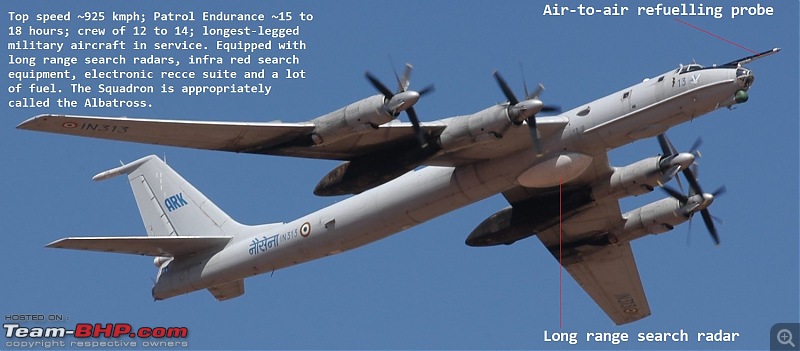 Photo 7C: To augment the IL-38 fleet of five the Navy inducted, in 1988, the Tupolev Tu-142M long range maritime patrol aircraft. The NATO name is 'Bear'. We wanted a few more IL-38s to make use of investments already made in maintenance infrastructure & training but the Russians advised against it as the aircraft was out of production. The Tupolev is unique in being swept wing and driven by propellers. The speed to which propellers can move an aircraft is usually not fast enough to need swept wings. But with the use of contra rotating propellers the Tupolev's can sustain 925 kmph which is almost as fast as the Seahawk jet fighter of an earlier era. They are armed with a contemporary suite of anti-submarine torpedoes, depth charges and anti-ship missiles and lots of electronic surveillance sensors. Some sources state that the Tupolev's have been converted to carry the air-launched version of the Brahmos missile. 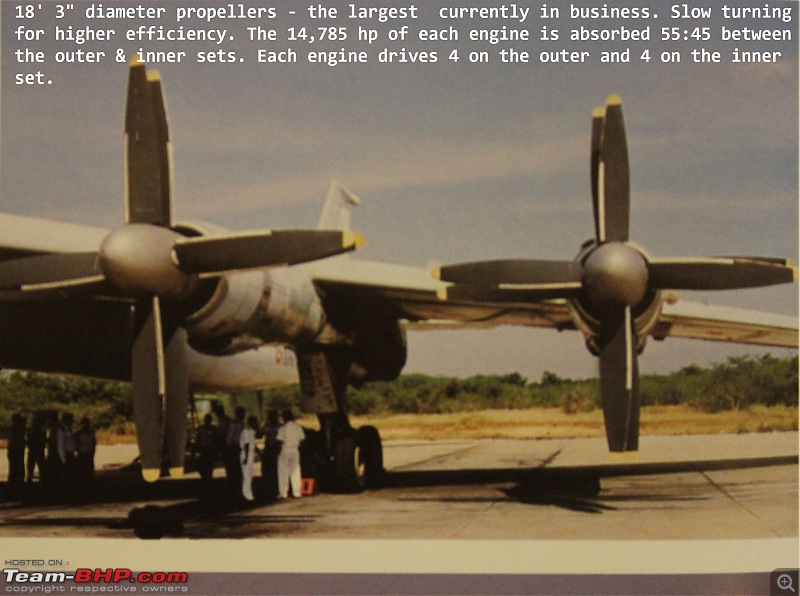 Photo 7D: The Tupolev is driven by the power of four Kuznetsov turbo props each generating 14795 hp at peak take off output. They have remained the most powerful turbo props ever in aviation history to enter service. It is to the credit of Russian designers that the first Kuznetsov entered service in 1956 and the Russians intend to keep the engines in service for a further 15 years till 2030. Each engine drives 8 blades set with 4 each on two shafts. The shafts turn in opposite directions. These 32 thrashing propellers make it the fastest (and noisiest) prop driven aircraft ever. The 4 engines together consume fuel at 6000 kgs an hour in cruise mode. American submariners claimed they could hear the noisy Tupolev's even while underwater. Not sure if that is true or a case of double dis-information. Photo Source @@ 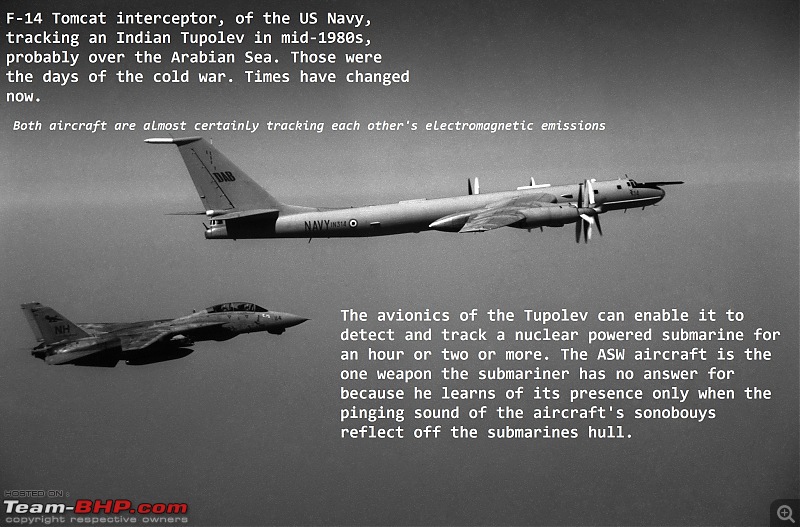 Photo 7E: Before our recently developed strategic friendship with the Americans they often times tracked the Indian Tupolevs when on long range patrol in the Indian Ocean. Here an F-14 Grumman Tomcat observes a Tu-142M on its delivery flight from Russia to Goa. Characteristically rugged the Russians, it is said, built the aircraft meant for 15 hour patrols without any toilet! I hope for the sake of Indian aviators this was quickly remedied. Specifications - Length 162'; Wingspan 167'; Maximum Take-off weight 185 tonnes; Top speed 925 kmph; Cruise speed 710 kmph ; Patrol Endurance 12 to 15 hours +; Range at cruise speeds ~11,000 kms; Weapon load 9000 kgs; 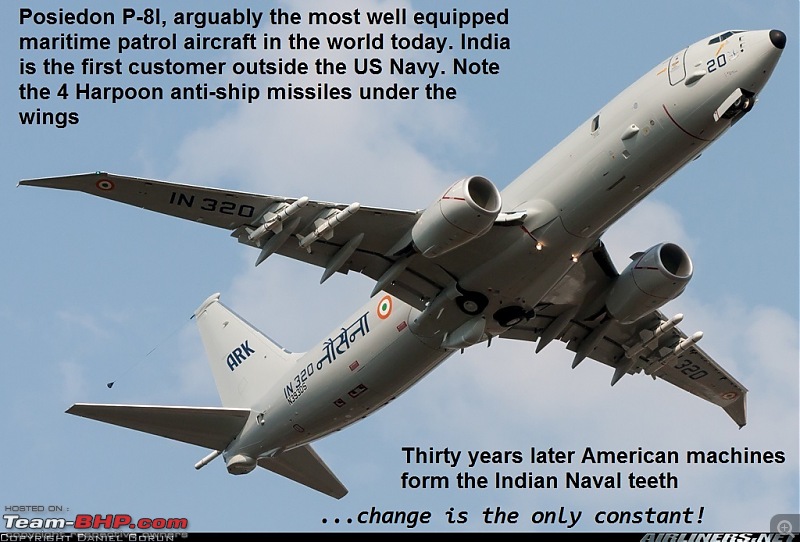 Photo 7F: Times change with geo-politics. Today our latest and best equipped aircraft come from the Americans. Above is the Boeing P-8I which arguably is the most advanced maritime patrol aircraft in the world today. Unlike earlier LRMPs it is designed to operate from high altitudes like 30,000' thus extending its range, patrol speed and endurance immensely. Its weapon delivery is designed to operate at 30,000' glide down to sea level and then switch on. Some may say that the aircraft received by India have some equipment tuned down from the American configuration but even after that they remain very advanced and formidable machines. The Navy has 8 in service, 4 on order and MoD say they are contemplating a further order of 12. Each patch, blister or protrusion on the aircraft is an electronic device - how many can you count. Unit cost US$ 220 million. 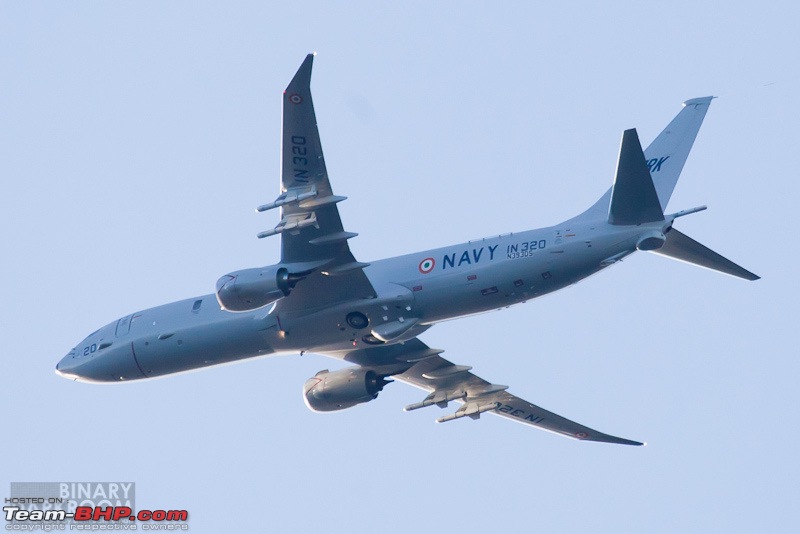 Photo 7G: The P-8I carries in its armoury Harpoon anti-ship sea skimming missiles with a range of 250km+, homing anti-submarine torpedoes, depth charges and mines. It is designed to serve 3 purposes - anti-submarine warfare, anti-ship warfare and electronic intelligence reconnaissance. Range & endurance is classified but likely to be in the 12 hour bracket. As its uniquely capable sensors permit it to patrol at high altitudes it flies a lot faster on patrol and thus covers a larger expanse of the ocean. On station patrol speed is classified but could easily be 400 knots (725 kmph) at 30,000 feet versus 250 knots at 5000' for other LRMPs. The Indian P-8I carries BEL developed equipment such as the IFF (Identification of Friend or Foe) system and a datalink system so that ships, aircrafts and shore establishments acting in concert can all share the same picture from the sensors. 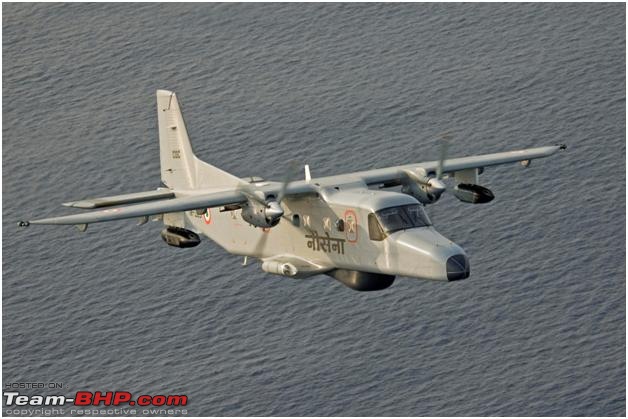 Photo 7H: The most ubiquitous twin engined aircraft in the Naval inventory is the Dornier Do 228 made by HAL under license. They look deceptively simple and unarmed from the outside but several Naval Dorniers are Information Warfare machines on the inside equipped with an Israeli search radar, optronic devices, passive radar sensing & measuring capability and data links to share and receive information from other platforms. They played a sterling and little publicized role in the 1999 Kargil War. The Dorniers of the Navy flew high up in the Himalayas tracking & marking enemy radars which were then sanitized (ie kaput-ed) by the IAF jets. By destroying your adversary's radar system you not only deny him the ability to see but also render his Surface to Air Missiles (SAMs) unusable. 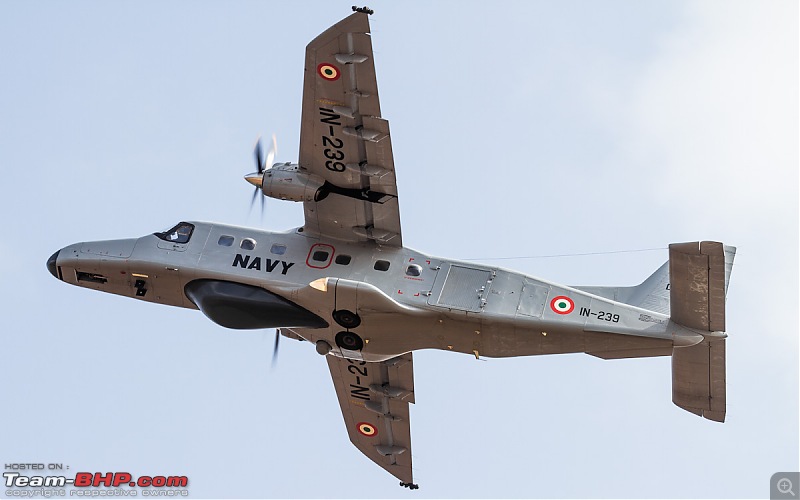 Photo 7I: Specifications, Dornier Do 228 - Length 54' 4"; Wing Span 55' 8"; Wing Area 344 sq feet; Maximum Take Off Weight 6400 kgs; Powerplant 2 x 715hp turboprops (Honeywell TPE 331's); Maximum Speed 200 knots+ (370 kmph) Patrol speed 160 to 180 knots; Endurance 6 hours. The Dorniers serve in 5 variants with the Navy and some of them are tasked with more modest but equally vital tasks of Search & Rescue, Transport & Training. 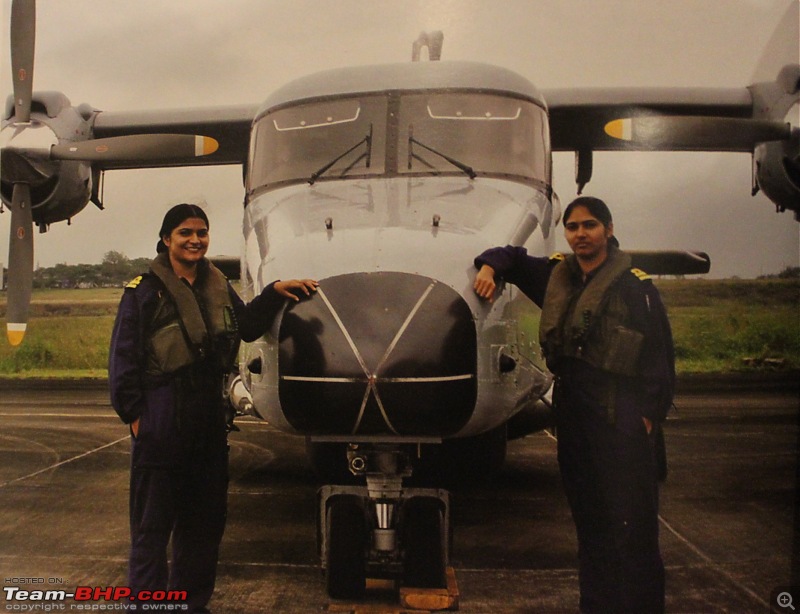 Photo 7J: The Indian Naval Air Arm was the first branch of the Armed Forces to deploy women officers in combat roles. Photo shows the first two women deployed to a combat role ever in India in any branch of our Armed Forces. They are Observers on the Dorniers. Three cheers for these pioneers - Lieutenant Seema Rani Sharma and Lieutenant Ambica Hooda - both serve as Electronic Warfare Sensor Officers. Photo Source && Helicopters - Anti-Submarine, Anti-Ship, Utility This brings us to the third leg of our story - the chopper, for both anti-submarine and anti-ship duties. The helicopters rotors are its wings and by continuously varying in pitch ie varying the angle at which the blade attacks the air in the horizontal plane as they rotate they generate vertical lift and forward speed. Its capability is not in speed but in being able to hover, operate from a small deck and still have a useful endurance of 2 to 4 hours. Helicopters today are powered by turboshaft engines. A turboshaft engine is a small jet engine with a power extraction turbine at the rear that like a turbo charger (of a car) draws out the energy of the hot fast flowing exhaust gases and converts it through a gear box into the rotation of the rotor blades. Most turboshafts extract the bulk of the kinetic energy and push it into the rotor gearbox and a small remainder of the kinetic energy goes out as hot fast free flowing gases that augment the forward speed in flight. 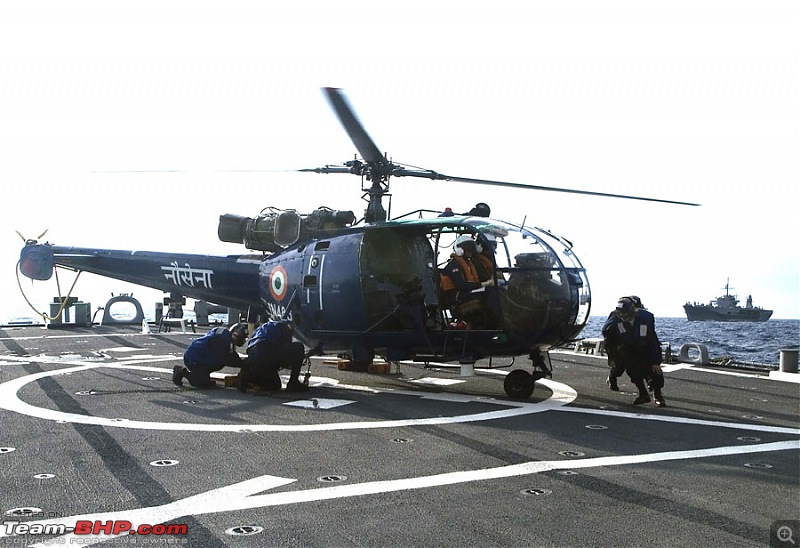 Photo 8A: Our first main line naval helicopters were the French Alouette III seen above. This is a small reliable machine powered by a de-rated Artouste turboshaft delivering 570hp at ~40 degrees centigrade ambient temperature. This gives it a load carrying ability of around 800 kgs and a combat endurance in the 90 minute bracket. These helicopters were made at HAL for 30 years and serve with the Navy mainly in light transports, air to sea rescue, patrol, training roles etc. They also serve with the Coast Guard, the Air Force and the Army. An anti-submarine version served on the Nilgiri class frigates. Known as the Chetak by HAL 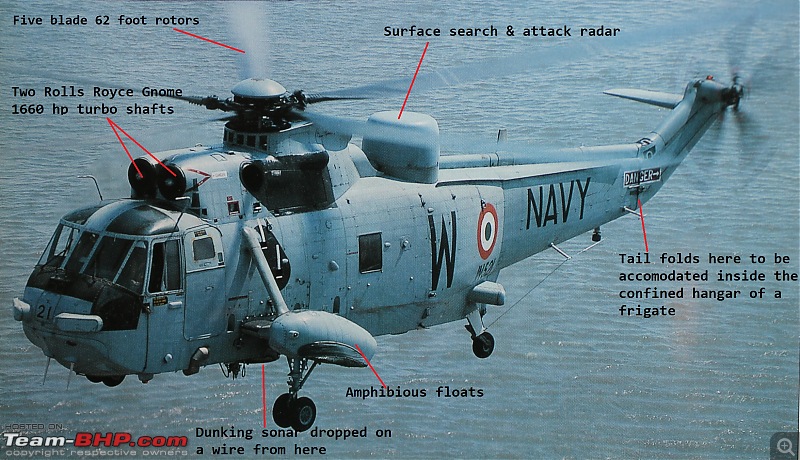 Photo 8B: The first real offensive helicopter was the British Westland Seaking in itself a development of the ever green American Sikosrky SH-61. The Seaking was the first helicopter to be designed around being an independent weapon system by itself not requiring sensory or command-control support from a mother ship. The Seakings were a sensor, processor and weapons delivery platform. The main sensors are the surface search radar and dunking sonar. When it entered service in 1971 it was our most potent anti-submarine system and with progressive upgrades has remained so. Photo Source ## 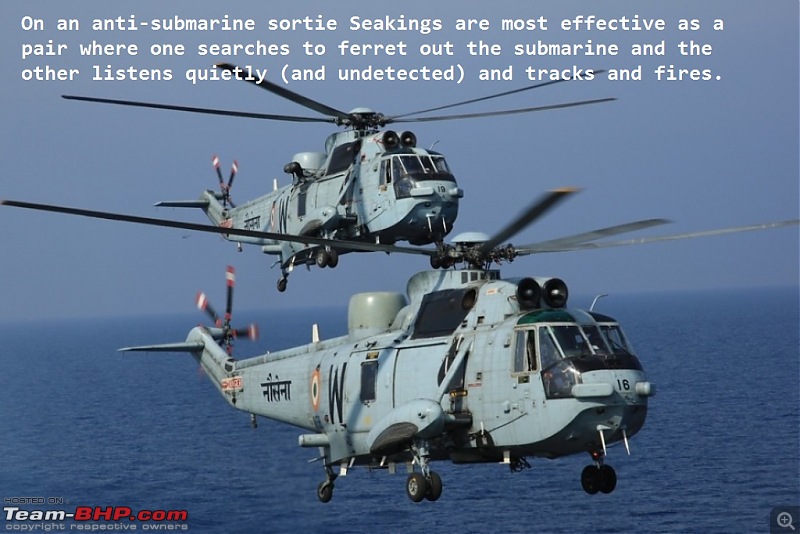 Photo 8C: The sonar is dropped with a holding cable and a data transfer wire dozens of metres into the ocean where it then searches for submarines either through passive listening (of propeller noise) or active acoustic pinging. The crew inside the helicopter listen for the enemy submarine and once tracked and identified can launch homing torpedoes or drop depth charges. Indian Seakings have a sonics processing system which through data links enables them to listen into signals from sonobouys dropped by other friendly aircraft on the same search & hunt mission. Sonobouys are one time use sonars. 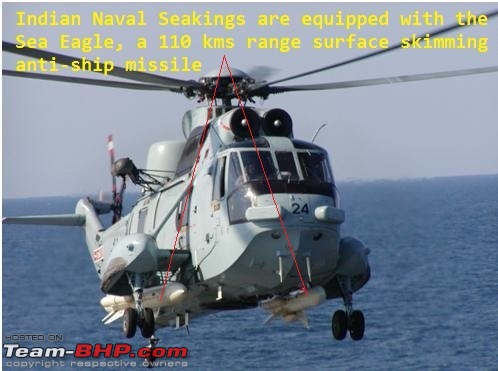 Photo 8D: Rotor diameter 62';Length with rotors turning 72'; Maximum loaded (most) ~9500 to 9700 kgs; Power Plant: 2 Rolls Royce Gnome turboshafts 1660hp each; Maximum speed 230kmph; Range with full payload and reserves ~400kms+; Mission endurance 2 to 3 hours+;Typical warload - 4 torpedoes or 4 depth charges or 2 Sea Eagle anti-ship missiles. Our Seakings, though demanding of maintenance have served us well since 1971 and with modernization remain efficacious. In the late 1990s to around 2005 we had much difficulties in spares due to an American embargo triggered by the 1998 Pokharan tests. The Godavari class, India's first indigenously designed warship was designed around the primary specification to carry two Seakings. You can read about it at this link, http://www.team-bhp.com/forum/commer...ahmaputra.html 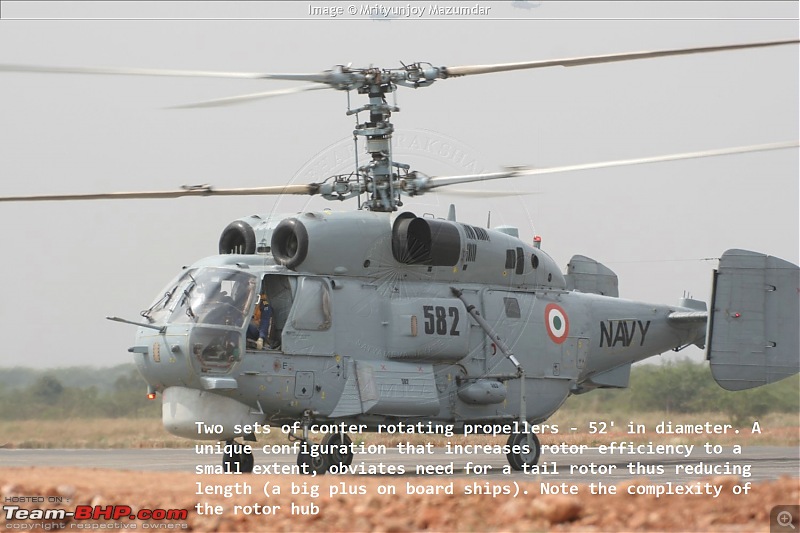 Photo 8E:Kamov Ka-28 (NATO name Helix) are ASW (anti-submarine warfare) helicopters similar to the Seakings but from the Russian stable. They and the earlier variant the Ka-25 have come into our service as the shipboard chopper on the Kashin class destroyers and Talwar class frigates. Multiplicity of types adds to the complexities of maintenance, training and logistics. Kamov's could have been an alternate to the Seakings after 1998 but for the fact that Russian commercial spares support is patchy. The Western trade press decries Russian aircraft as having a low Mean Time Between Overhaul (MTBO) but forget to state that between two MTBO events these hardy machines need little by way of care and maintenance. 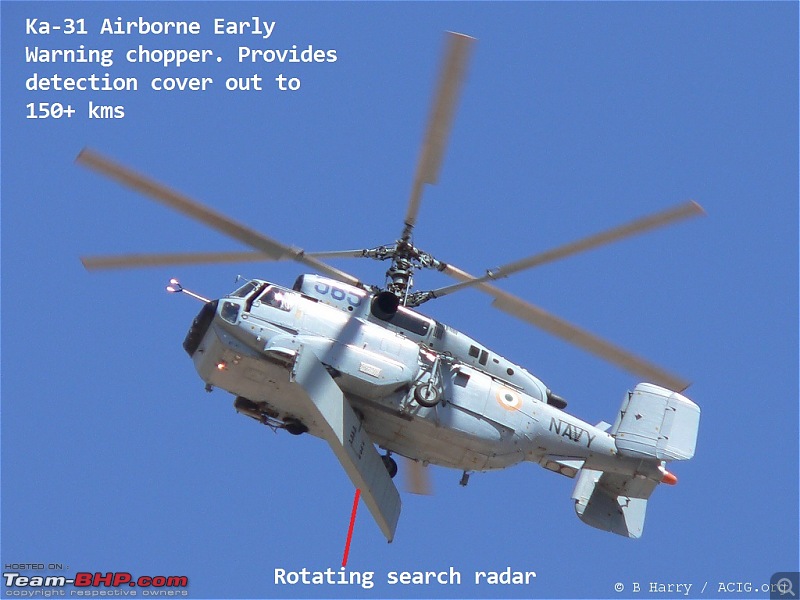 Photo 8F: Another variant of the Kamov is the Ka-31 Airborne Early Warning helicopter. The plannar array search radar deploys below the fuselage and rotates. When the helicopter lands the radar folds up and lies horizontally flush with the bottom of the airframe. India has 9 in service. The radar can detect aircraft and ships and sea skimming missiles. Being a helicopter inadequate patrol endurance remains a challenge. The Ka-31 serves as an early warning system from both ship and shore with data links to transmit the picture it is 'seeing' to a mother ship for action. 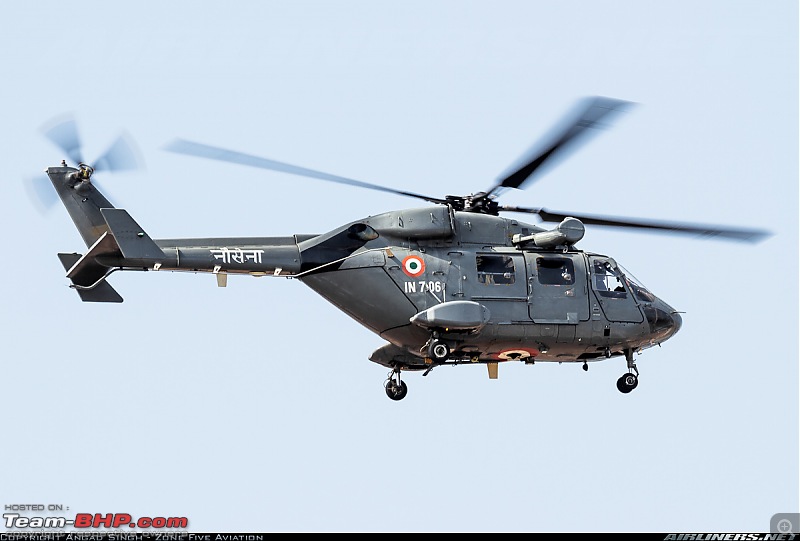 Photo 8G: The Dhruv entered service with the Navy in 2011 in the transport and search and rescue role. The Navy has thus far not looked at the Dhruv for an anti-submarine role as it is deemed too small for that. I hope a full fledged Naval version of this indigenous 5 tonne helicopter is developed - we owe it to ourselves that the Dhruv does not go the way of the Marut HF-24. Some web sites including Wikipedia have negative notes on the Dhruv while my business experience with hundreds of hours of very exacting flying by the Dhruv indicate it is a reliable, rugged and well designed machine. Since 1980 the Dhruv is the only meaningful indigenous design to enter full service in numbers and deserves the support of our Armed Forces. You can read more on the Marut story at this link http://www.team-bhp.com/forum/commer...t-fighter.html 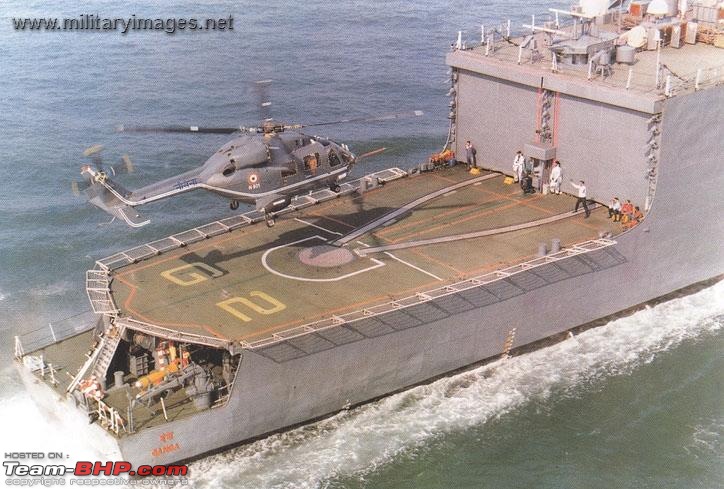 Photo 8H: Specifications for the Naval Dhruv- Length 52'; Rotor diameter 43'; Payload 2600 kgs, Maximum Take-off weight 5500 kgs; Powerplant 2 Shakti/Turbomeca 1000 KW turboshafts (~1400 shp); Maximum speed 295 kmph, combat radius 325 km, cruise (or ferry) range 825 kms; Capacity 12 troops or 14 passengers in a squeeze or 2600 kgs of cargo extremis Last edited by V.Narayan : 17th May 2015 at 09:30. |
| |  (25)
Thanks (25)
Thanks
|
| The following 25 BHPians Thank V.Narayan for this useful post: | .anshuman, Abhinav V, aditya101, Akshay1234, BLACNWYTE, carrazy, dhanushmenon, digitalnirvana, Foxbat, Gannu_1, GTO, HappyWheels, Insearch, JoseVijay, Lobogris, manuc, moralfibre, Myth_sx, predatorwheelz, R2D2, Rudra Sen, Scarlet_Rider, skanchan95, SS-Traveller, vivtho |
| | #3 |
| Distinguished - BHPian  Join Date: Aug 2014 Location: Delhi-NCR
Posts: 4,315
Thanked: 71,982 Times
| Re: Indian Naval Aviation - Air Arm and its Carriers 1983, Enter the Hawker Harrier………the versatile jump jet 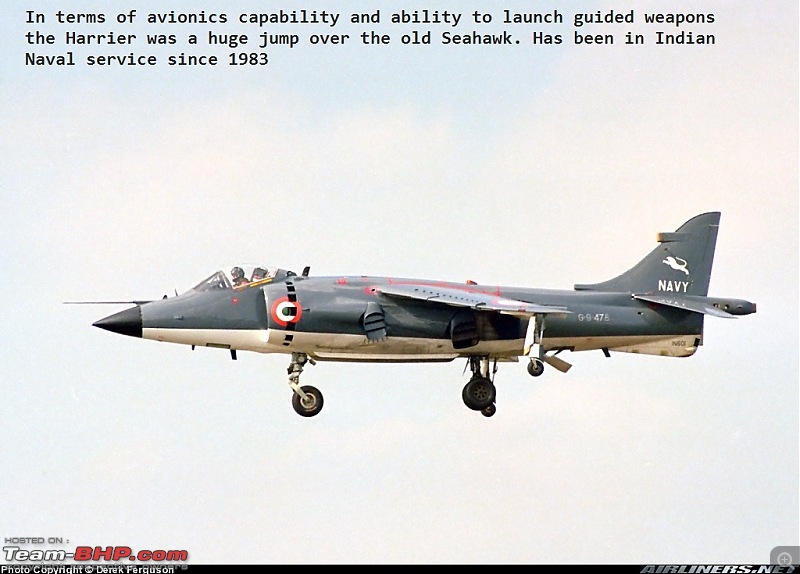 Photo 9A: In the late 1970s the British developed their Harrier vertical take off fighter into the Sea Harrier optimized for operations off the deck of a ship, modified for the corrosive effect of proximity to the sea and equipped with a modern search & attack radar tuned for air-air and air-ground attack. India became the first customer of the Sea Harrier when most countries still looked upon it as an oddity. The Sea Harrier went on to gain fame at the hands of British pilots in the Falklands war where they flew in appalling weather that would have grounded conventional aircraft and shot down 31 Argentinean aircraft in exchange for no loss of their own. 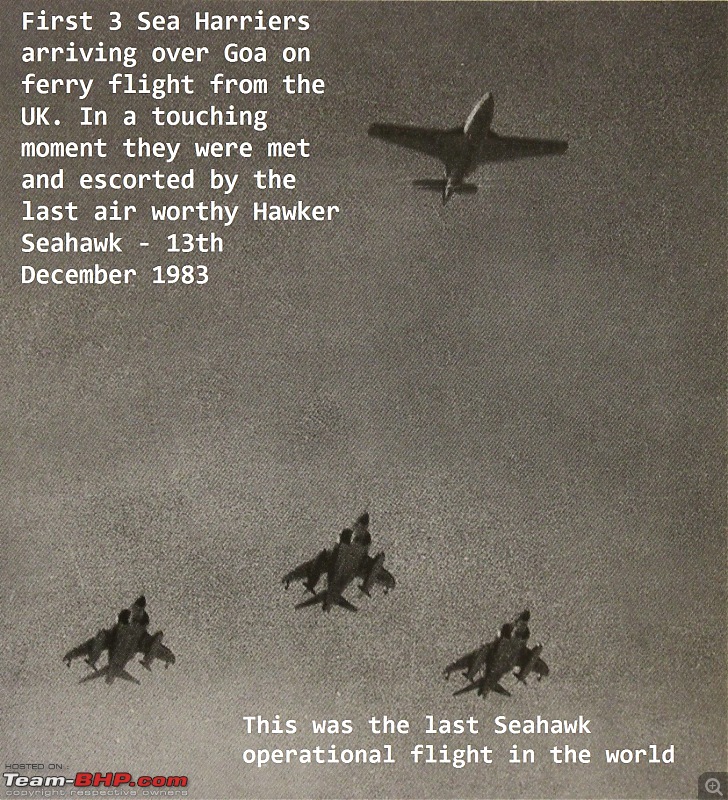 Photo 9B Photo source -personal collection 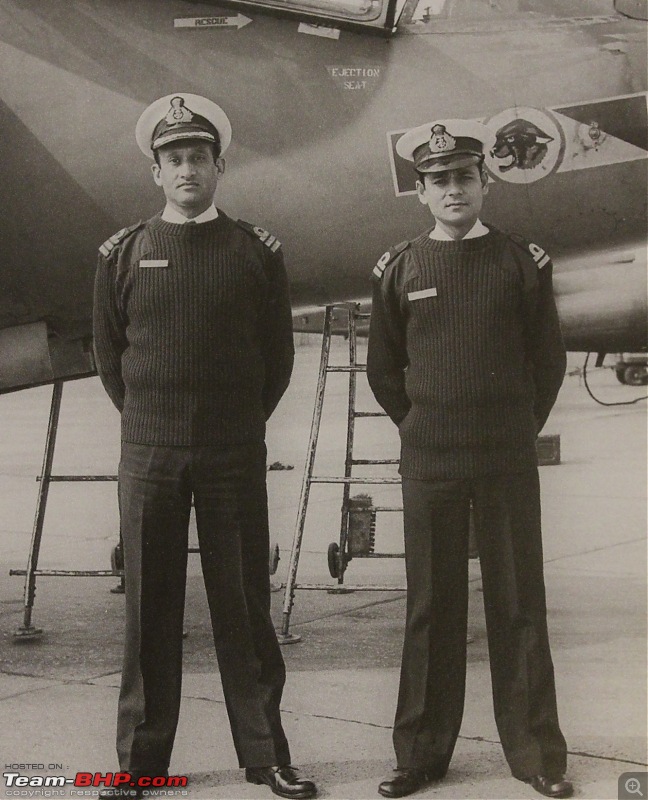 Photo 9C: Two of our first four Harrier pilots were Commander Arun Prakash (left) who commanded the White Tigers squadron twice - first with Seahawks in their last tour and then re-forming the squadron around the new Sea Harriers. He later rose to be the Naval Chief. On his right is Lieutenant Shekhar Sinha who was the last and youngest pilot to qualify on the old Seahawk birds. He later rose to be a Vice Admiral and commanded the Western Naval Command. They were trained as Sea Harrier instructors in order to train other pilots back home. Aviators need to be slim & fit! Photo Source @@ 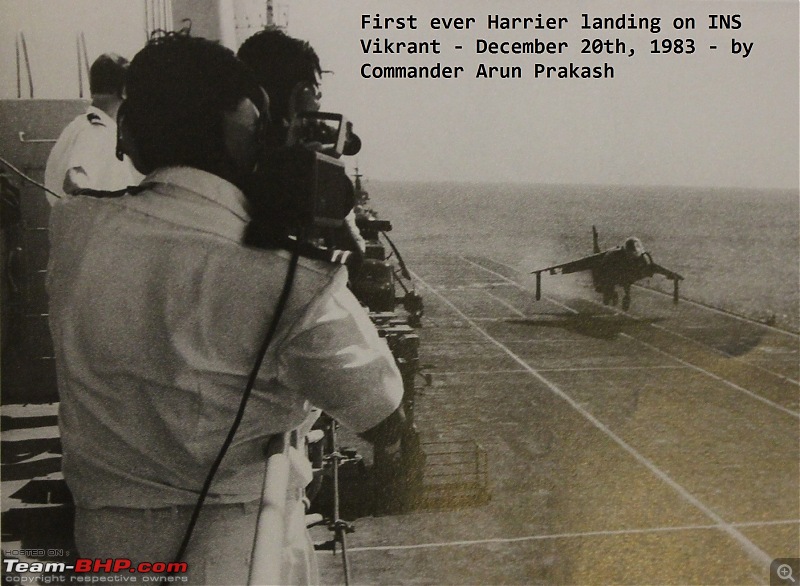 Photo 9D Photo Source@@ 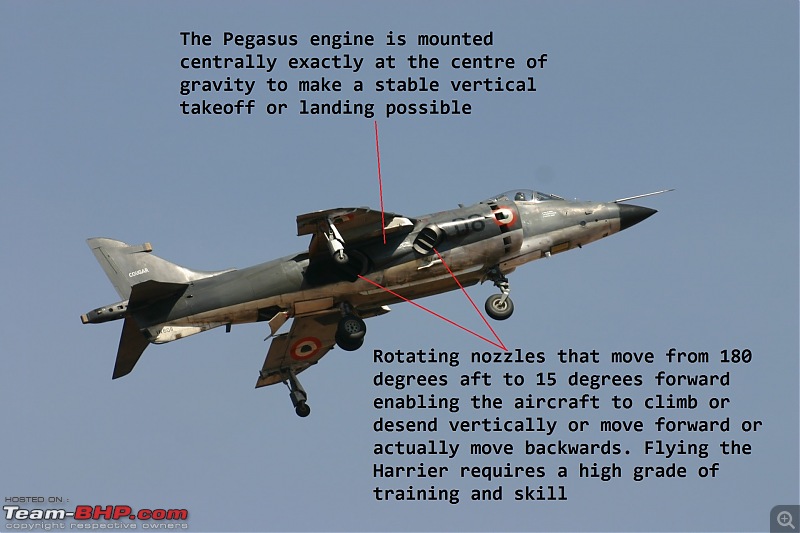 Photo 9E: The Harrier has 4 rotating nozzles which vent out the jet exhaust equally. The nozzles rotate together from 180 degrees aft (to move forward) to 90 degrees (full down, to climb/land vertically) to effectively 15 degrees forward to allow the aircraft to literally fly backwards slowly or decelerate in forward flight with great rapidness. The Harrier also has 4 small puffer ducts in the nose, both wing tips and the tail that blow high pressure air to stabilize the aircraft when in vertical take off or landing mode. The secret of the Harrier's Pegasus engine is the mechanics with which it ensures that all 4 nozzles emit exactly the same thrust and the way all 4 nozzles rotate simultaneously to exactly the same position. 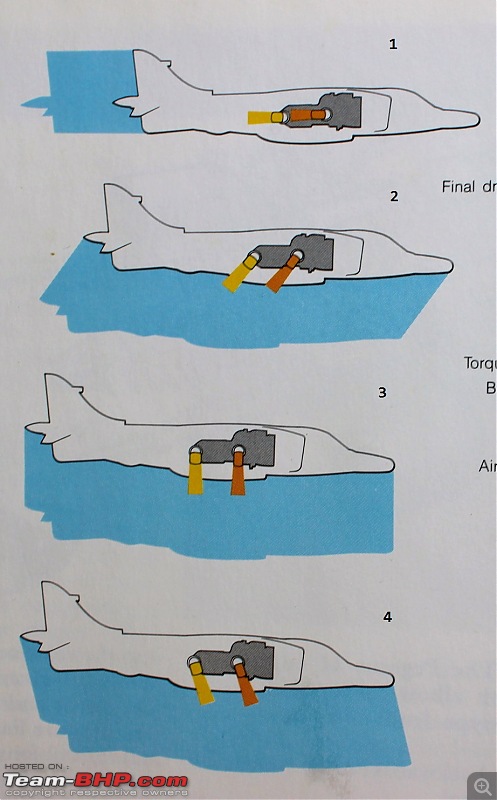 Photo 9F: In #1 the nozzles face 180 degrees aft moving the aircraft forward at a maximum of 1185 kmph; in #3 The nozzles are rotated down 90 degrees to face vertically down for vertical take-off and landing; in #2 the nozzles are in transition either moving from a vertical takeoff to forward motion or moving from forward flight to a vertical landing; in #4 the nozzles are facing partly forward to help - used mainly to slow down rapidly as well as help the pilot find the right spot to land on - can be used (at least in theory) as a maneuvering tactic in air combat - it has definitely been tested in peace time. Diagramme source++ 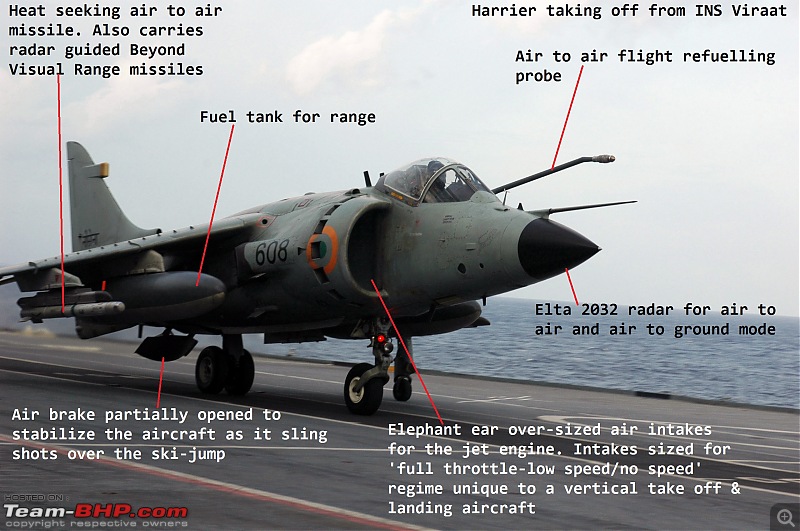 Photo 9G: The Harrier is powered by the unique Rolls Royce Pegasus vectored thrust turbofan engine giving ~9750 kgf of thrust. Top speed ~1185 kmph; initial climb rate in clean configuration 50,000 feet/second; intercept radius ~300 nautical miles (550 kms), lo-lo attack radius ~200 nautical miles (375 kms); service ceiling 51,000 feet; Armament - typically 2 x 30 mm cannons with 300 rounds and a warload of ~3600 kgs comprising of a mix of Magic Matra infra red guided air - to - air missiles, Sea Eagle anti-ship missiles, 68mm rocket pods, cluster bombs, anti-runway bombs and iron bombs. Length ~47'7", Wing Span 25' 3"; Maximum vertical takeoff weight 8165 kgs, Maximum Ski jump take-off weight 11,340 kgs. Our Harriers have been modernized by HAL with mainly Israeli and some Indian avionics. Equipped with Israeli Rafael missiles with an air to air range of ~50 kms. India acquired 30 Sea Harriers about half of which remain in service. It is to be seen how the Navy deploys this versatile aircraft after INS Viraat is retired. 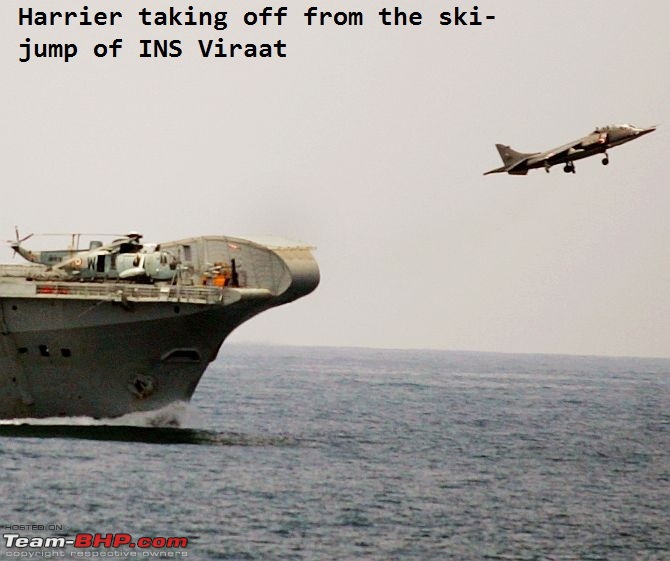 Photo 9H: Note how close to the ski-jump the Seaking chopper is parked. The Harrier pilot does his take-off run with aircraft parked barely 10 feet from his right side wing tip. This is due to the constrained space on a carrier deck. Next time you take off from an airport imagine a row of aircraft parked along the runway leaving the A320 with only 10 feet on one side of the wing tips to make its take off run. Bear in mind the ship is also pitching and rolling. For most part Indian Harriers operate in the Short Take Off & Vertical Landing (STOVL) mode. 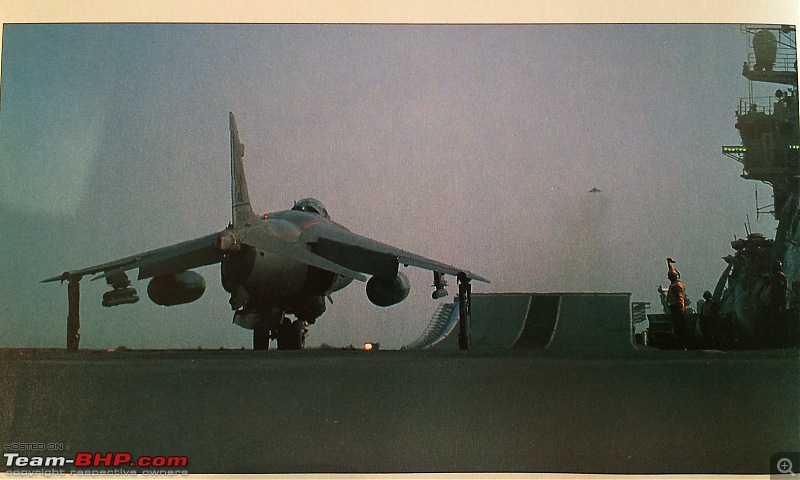 Photo 9I: Second Harrier of a pair awaiting the take-off signal from the Flight Deck Officer. This photo depicts the loneliness of a fighter pilot awaiting his moment on the ski-jump trapeze. The machine accelerates from 0 to 70 knots (130 kmph) in a run of about 200 odd metres. Photo source-personal collection 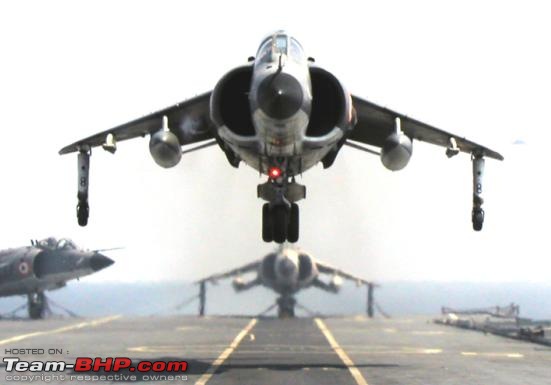 Photo 9J: Harrier landing vertically. Note downward jet exhaust that is supporting the weight of the aircraft 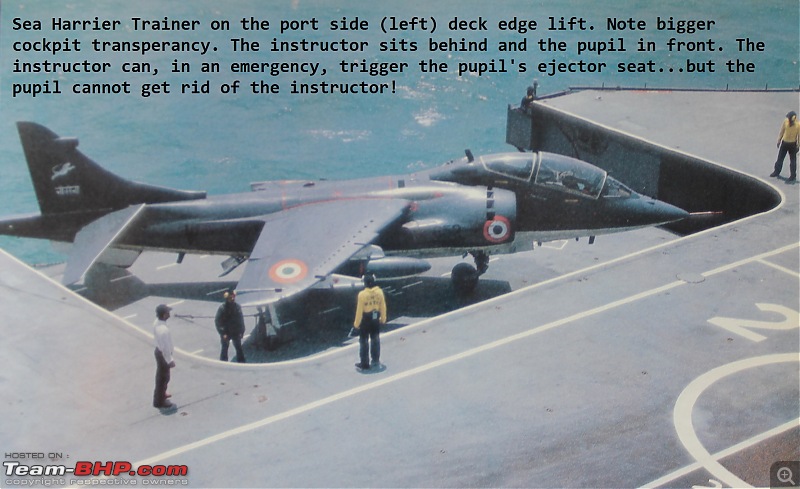 Photo 9K: Harrier Trainer on INS Viraat's deck lift. Photo Source - personal collection 1986, INS Viraat joins the fleet 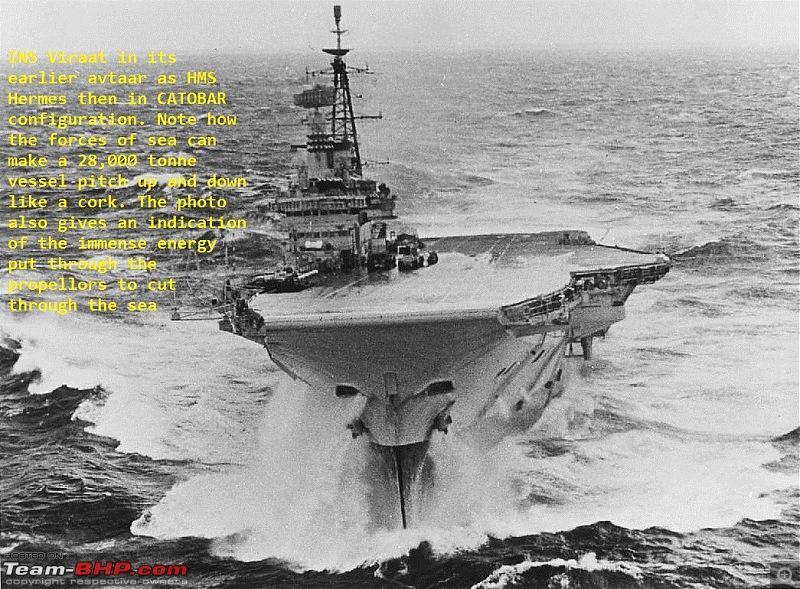 Photo 10A: By the early 1980s it was clear that INS Vikrant had a limited shelf life and to retain our hard earned carrier aviation skill we needed a newer and larger ship. HMS Hermes of Falkland War fame had been put into reserve by the Royal Navy in 1983. UK proposed and India accepted and we purchased HMS Hermes in 1986 and put her into refit in the UK. She sailed to India in 1987 breathing new vigour into the Naval Air Arm. 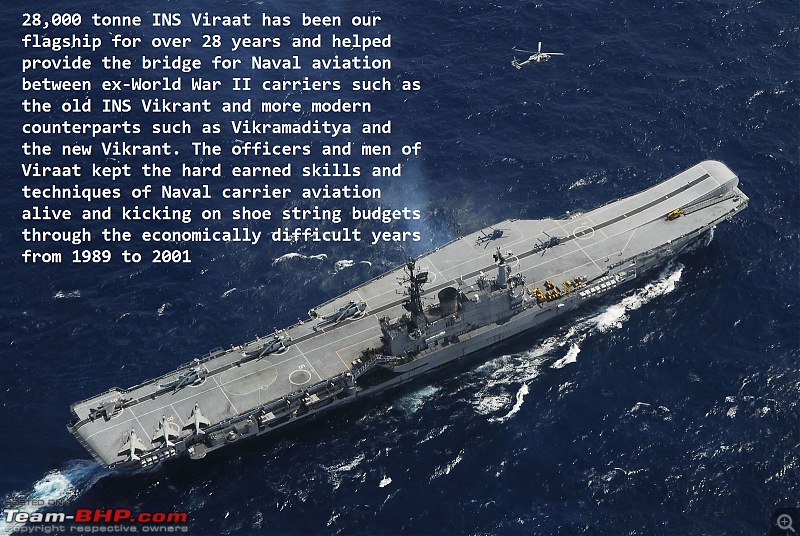 Photo 10B: INS Viraat had commissioned into the Royal Navy in 1959 and was later fitted with a 12 degree ski jump for the Sea Harriers to operate from at maximum take-off weight. Full load displacement 28,700 tonnes, Length 743 feet; Beam across deck 160 feet; Draught 29 feet (ie depth underwater); Power Plant - Steam turbines driving 76,000 hp through two propellers; Top speed 28 knots (with age this is likely to be a tad lower today); Aircraft capacity - 28. She can carry 750 troops for amphibious landings and has armour over key spaces such as the engines. She is fitted with Isareli Barak short range missiles which have a competent anti-missile protection capability. 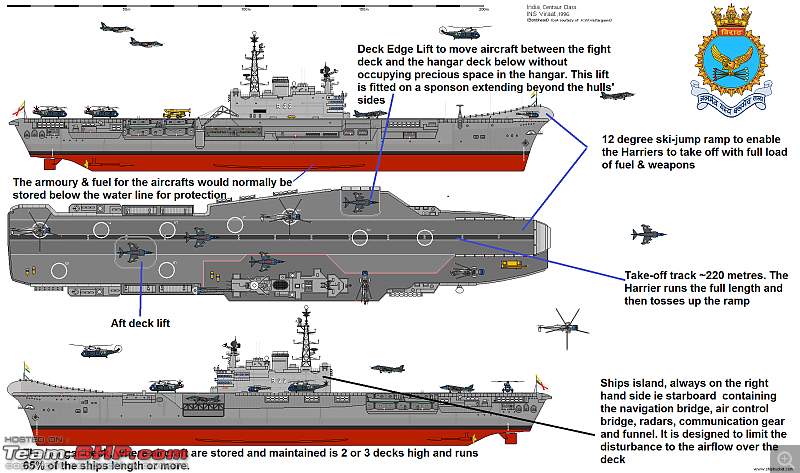 Photo 10C: INS Viraat's primary roles are anti-submarine warfare, sea control and support for an amphibious landing. She is the oldest major ship in service today in any major navy. It is to the credit of the Navy's engineers, dockyard hands and Cochin Shipyard that the old lady is still sailing proudly. But with INS Vikramaditya in commission it is likely Viraat will be decommissioned in 2016. She has served us well for almost 30 years after a heroic career of 27 years with the Royal Navy. Copyright K.W. Vestergaard 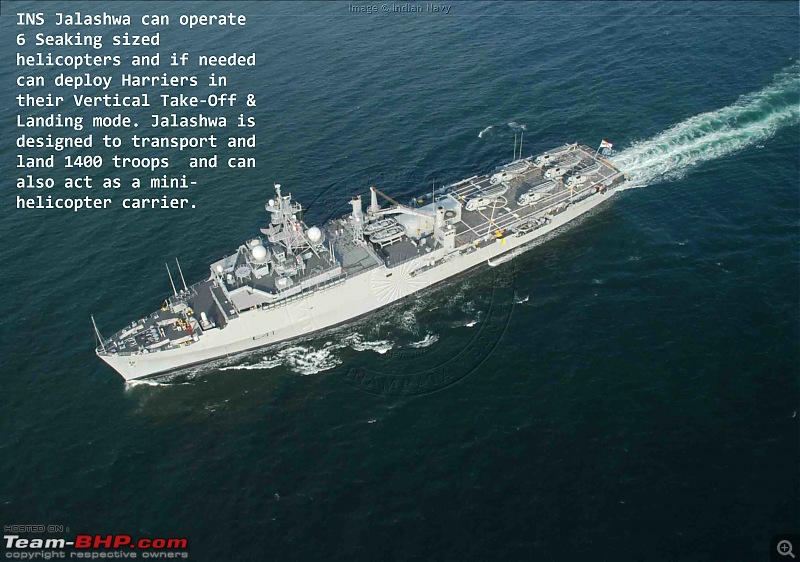 Photo 10D: INS Jalashwa is a large amphibious warship that embarks, transports, and lands troops & tanks into a war zone by sea, primarily using landing craft and helicopters. She was acquired second hand from the US Navy for an all-in sum of US$ 90 million; a good bargain under any circumstance. Sadly bureaucratic myopia prevented us from acquiring a second vessel which was on offer. Specifications - 16,800 tonnes full load, 570 feet long, 100 feet beam, speed 20 knots (37 kmph). Photo Source -Wikipedia 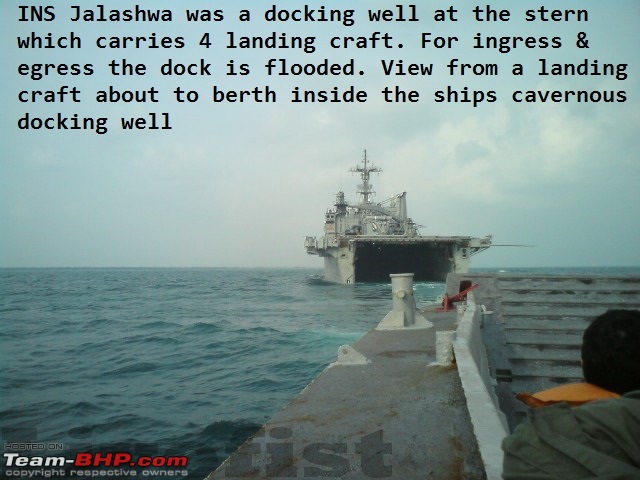 Photo 10E: The docking well at the stern is 168 feet long and 50 feet wide to accommodate 4 landing crafts. 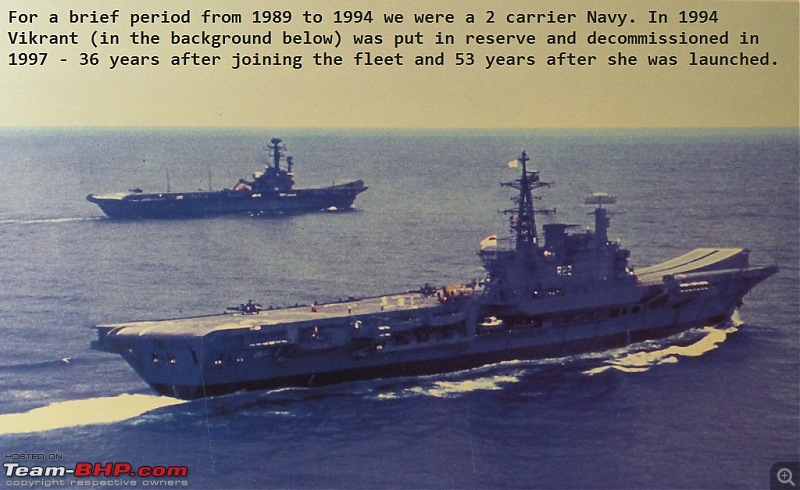 Photo 10F: In the mid-1980s INS Vikrant, now ageing, was taken into dockyard hands one last time and fitted with a ski jump to enable her operate the Harriers at their full take-off weight. The re-construction was done in India and she re-joined the fleet in 1989. This modification meant that the CATOBAR capability was taken out and the Alize's could no longer operate from her. Viraat and Vikrant are the only carriers in the world to have served in both configurations - CATOBAR and STOVL. Photo Source @@ 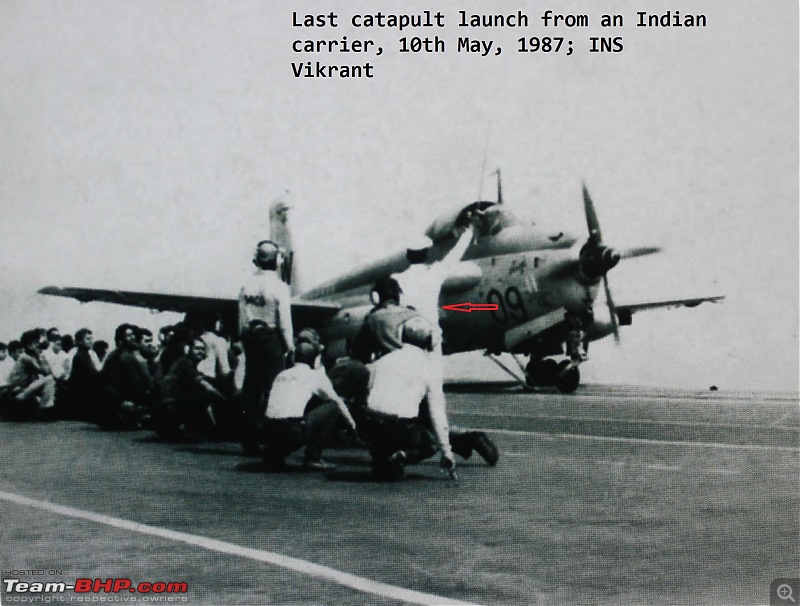 Photo 10G: On 10th May, 1987 INS Vikrant celebrated her last steam catapult launch by Commander RK Singh. It was also the last catapult launch of the Navy ever since (other than training sorties by our aviators on US carriers). The Flight Deck Officer, thoughtfully, at his own initiative put on the full Naval uniform for the occasion with the ceremonial sword (see arrow). Sadly the Navy did not capture the moment on print. This photo had to be dug out of someone's personal collection.` Last edited by V.Narayan : 17th May 2015 at 09:32. |
| |  (20)
Thanks (20)
Thanks
|
| The following 20 BHPians Thank V.Narayan for this useful post: | Abhinav V, Akshay1234, arunphilip, AVR, BLACNWYTE, carrazy, embee, Foxbat, Fuldagap, Gannu_1, gschandra, GTO, HappyWheels, JoseVijay, khoj, manuc, moralfibre, Scarlet_Rider, SmartCat, sridhar-v |
| | #4 |
| Distinguished - BHPian  Join Date: Aug 2014 Location: Delhi-NCR
Posts: 4,315
Thanked: 71,982 Times
| Indian Naval Aviation - Air Arm and its Carriers INS Vikramaditya & the Mig-29K This brings us to the 4th and last part of our story of the here and now of INS Vikramaditya joining the fleet in 2013 and entry into service of the Mig-29K multi-role combat aircraft. Current Carrier strength across Navies is - USA 10 to 11 (2 under construction) + 9 large amphibious warfare ships that serve as Harrier Carriers and Helicopter Carriers; Italy 2; India 2 (but soon to be 1 again; 1 under construction); France 1; Russia 1; China 1; Brazil 1; Spain 1 large amphibious ship each that can double up as a Harrier Carrier + 1 in reserve; UK currently, sadly, 0 but 2 under construction; Thailand 1 in reserve 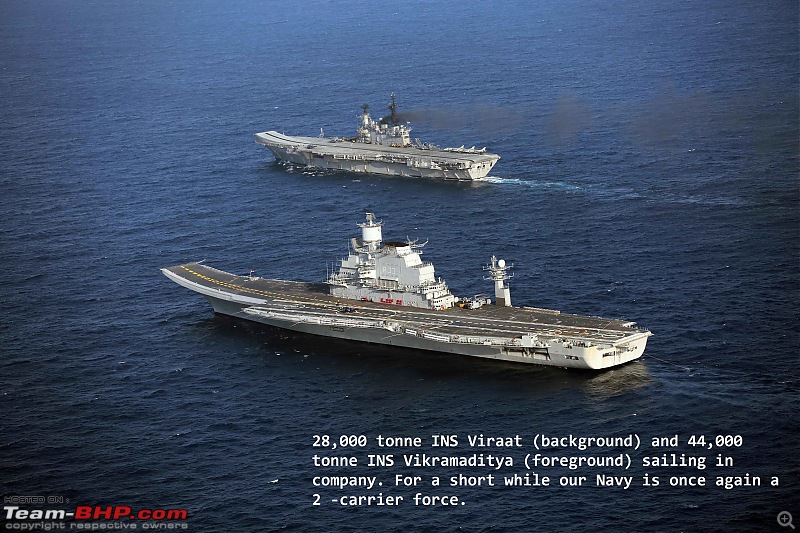 Photo 11A: Once again for a short period, now, we are a two carrier Navy…….. but INS Viraat is likely to be paid off soon. Carriers are expensive propositions to acquire and operate. Outside USA, UK & France several countries had some carrier capabilities in the 1960s - Argentina, Australia, Brazil, Canada, India, Netherlands, Spain - of these only Brazil & India remain committed to maintaining at least one carrier today - Italy & China joined the club, Thailand came and went, Spain is at the fringe. It is to the credit of our Navy that we have continued to build and retain this precious capability on tight budgets Photo Source Indian Navy Calendar 2015 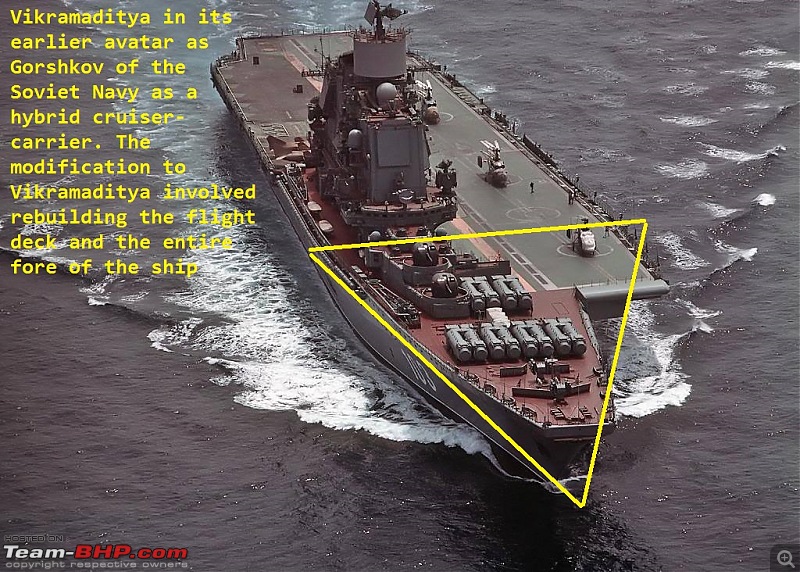 Photo 11B: In 1992 soon after the collapse of the old USSR discussions started over purchasing and modifying the Soviet carrier-cruiser 'Gorshkov'. We inspected her several times through the 1990s but no decision was taken due to economic hard ships in the 1990s. With each passing year the ship was getting older and more expensive to rehabilitate. Finally in 2004 we signed the deal to buy Gorshkov for $934 million - a surprisingly low figure but one that made the deal attractive and politically palatable. Photo shows what she looked like in her Soviet days with VTOL capability and a heavy cruiser armament for all 3 dimensions (air, sea and sub-surface) 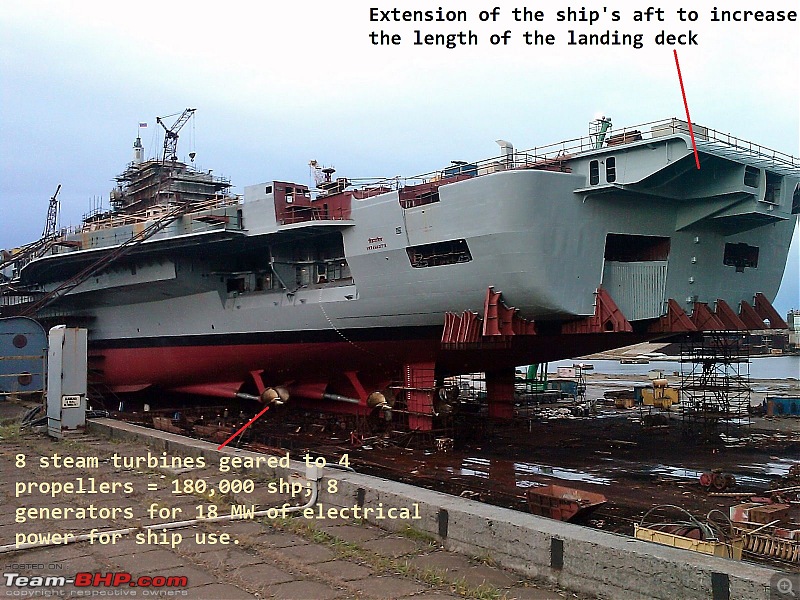 Photo 11C: We worked with the Russians to rebuild Gorshkov with a ski jump, a more expansive (and hence useful) flight deck, removal of the long range missiles and a deep refit of the engines, revised electrics and a completely new modern electronics suite for detection, direction, surveillance and counter measures. The modification not surprisingly proved to be more complicated and messy than planned, budgets escalated, Russians arm twisted us, the initial engine trials were completely not upto scratch and so on. Re-christened INS Vikramaditya she commissioned on 16th November 2013 at a final cost of $2.35 billion. Even at this 2.4X escalation she is cheap for a carrier. Comparable publicly available numbers are US$4.5 billion for the 42,000 tonne French carrier Charles de Gaulle or US$ 5.0 billion plus for the 65,000 tonne British HMS Queen Elizabeth. 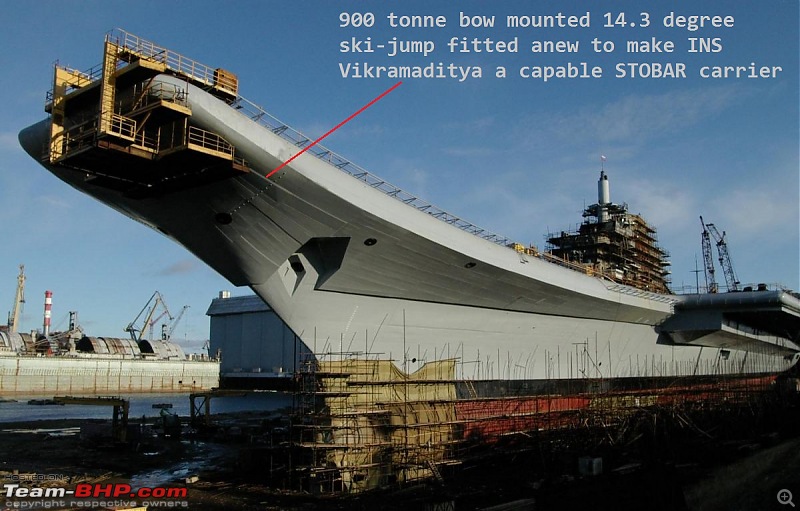 Photo 11D: Vikramaditya's ski-jump that makes all the difference to its ability to launch super sonic 25 tonne strike fighters. Photo Source - Wikipedia 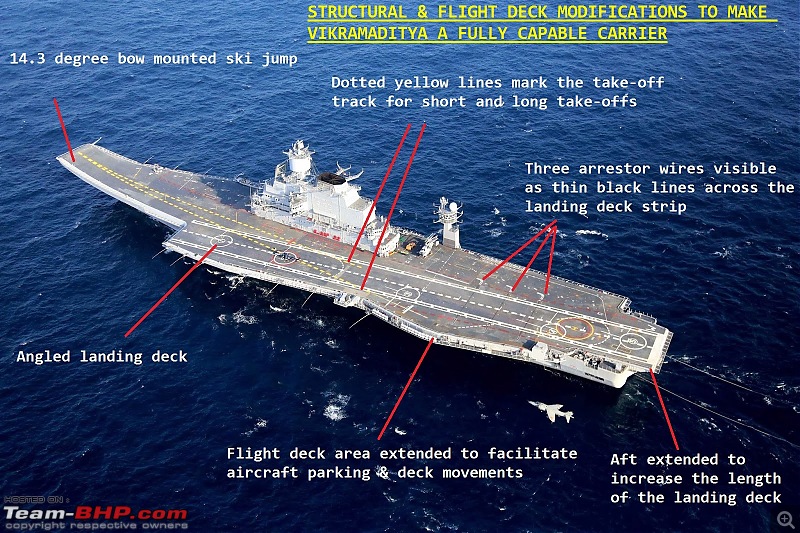 Photo 11E: Re-building Gorshkov to Vikramaditya involved reconstruction of 1750 of her 2500 compartments, building 234 new ones, inserting 2300 kms of wiring/cabling and 3000 kms of piping in addition to refurbishing the boilers and power plant and the installing new electrical systems, fire protection systems, nuclear fallout environment control systems amongst many others. Other than the hull structure and engines she is an all new ship Photo Source - Wikipedia 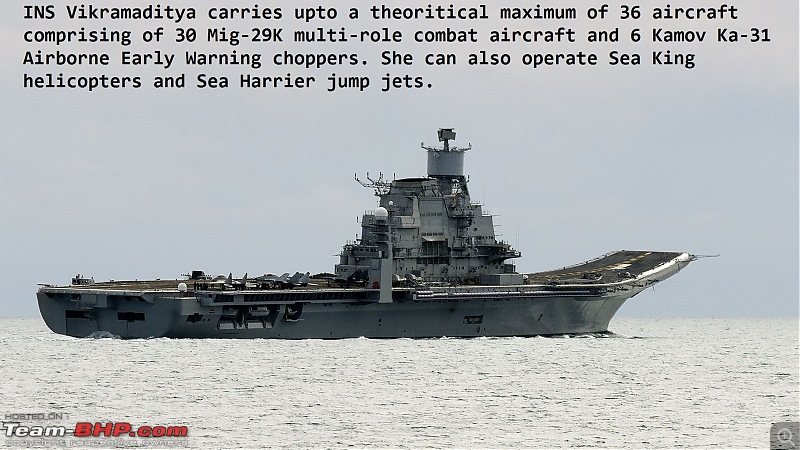 Photo 11F: INS Vikramaditya is fitted with advanced search radars, air traffic control & landing aids, advanced command control & communications systems, data links and electronic warfare & jamming systems that maintain a protective bubble around the ship. She carries a maximum of 30 Mig-29K's and 6 Kamov Ka-31 Airborne Early Warning helicopters (see Photo 8F). She is equipped with at least four 30mm multi-barrel gatling guns for shooting down sea skimming missiles and enemy aircraft that break through the outer cordons. She is expected to be fitted with the Barak missiles that have a proven ability to shoot down incoming anti-ship missiles.  Photo 11G: Full load displacement 44,500 tonnes; Length 284 metres (930'), Beam across the flight deck 60 metres (196'), Draught 10 metres (33'); Size of flight deck about 8000 sq metres; Top speed 32 knots, sustained speed 30 knots; Range at 18 knots officially claimed as 13,500 nautical miles (25,000 kms) though I suspect it is higher; Powerplant Steam turbines giving out 180,000 shp. Some have been critical of her acquisition. My only lament is that we did not take this decision in 1993 when the Russians first proposed it. Copyright Gollevainen & Hood Mig-29K - the present mainstay of the Naval Air Arm 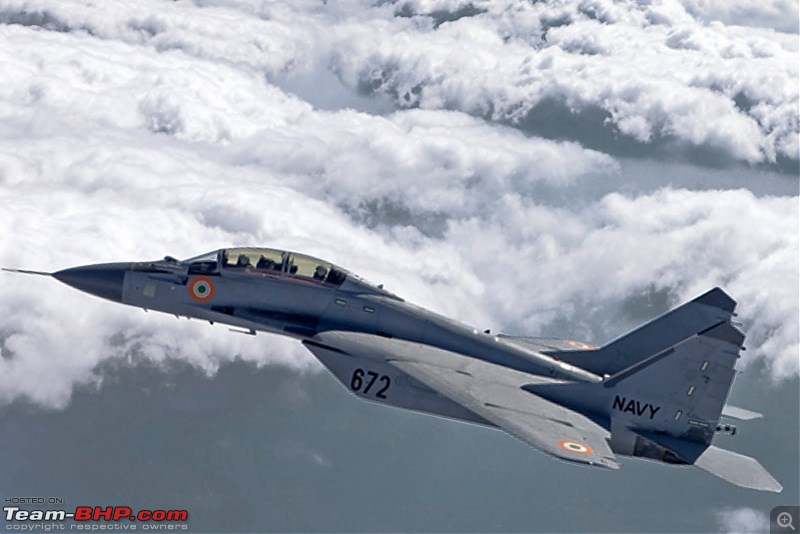 Photo 12A: INS Vikramaditya's teeth are made up of a squadron of 24 Mig-29K multi-role fighters with high competence in air-air and air-ground operations. India has 45 on order or delivered including several twin seaters which serve as fully combat capable trainers. The Mig-29K is a greatly revised and upgraded version of the Mig-29M which in turn was a development of the Mig-29 with more powerful engines, a newer generation of avionics and weapon delivery systems and with much needed longer legs. In my personal opinion the Mig-29K is a superior and more reliable machine than even the redoubtable Sukhoi Su-30MKI with the IAF. 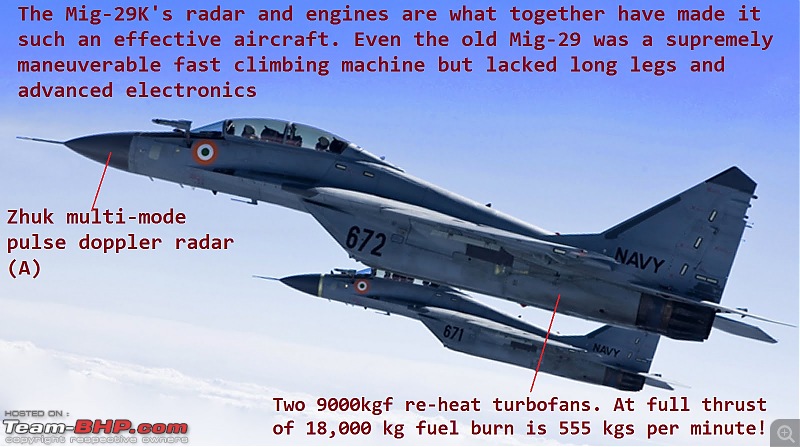 Photo 12B: (A) Pulse-doppler radar with air-air & air-ground modes, ability to identify and shoot targets low down hidden by ground clutter, ability to scan for new targets while tracking existing ones, terrain mapping and following ability for better lo-lo penetration under the radar screen and many others. It also has a synthetic aperture capability which means the ability to bathe a target in radar waves and form a 3D image of the target for the pilot to better identity before engaging. (B) The Klimov RD-33MK reheat turbofans provide 9000 kgf (kg force) of thrust in full reheat mode and 5100 kgf in normal or dry thrust mode. Reheat means that quintals of fuel is burned in the hot jet exhaust of the engine giving it a rocket like thrust for short periods of a few minutes. Fuel consumption in dry configuration is 131 kgs per minute with both engines at full dry thrust of 5100 kgf while in reheat it jumps to 555 kgs per minute at 9000 kgf per engine. These RD-33's are rugged engines that work well in disturbed airflows and need little maintenance between overhauls. (C) For shorter range engagements, below 15 kms, the Mig-29K is equipped with an Infra-Red Search & Track (IRST) to detect, track & engage targets without switching on the radar and thus betraying its position. The IRST is slaved to a laser for range finding.  Photo 12C: Specifications Maximum speed 1400 kmph low altitudes to 2200 kmph at high altitudes; Initial climb rate 65,000 feet/minute; Normal or clean take off weight ie without external stores, 18,500 kgs; Full take off weight 24,500 kgs; Weapon payload 5500 kgs across 13 weapon stations; Power Plant 2 x Klimov reheat turbofans (also called afterburning turbofans) rated at 9000 kgf at full reheat thrust; High power to weight ratio - in clean configuration 0.97:1.00 and fully loaded 0.73:1.00; Radius 850 kms in interception mission and 300 kms lo-lo attack mission with full warload. With a reduced war load the attack radius would increase. 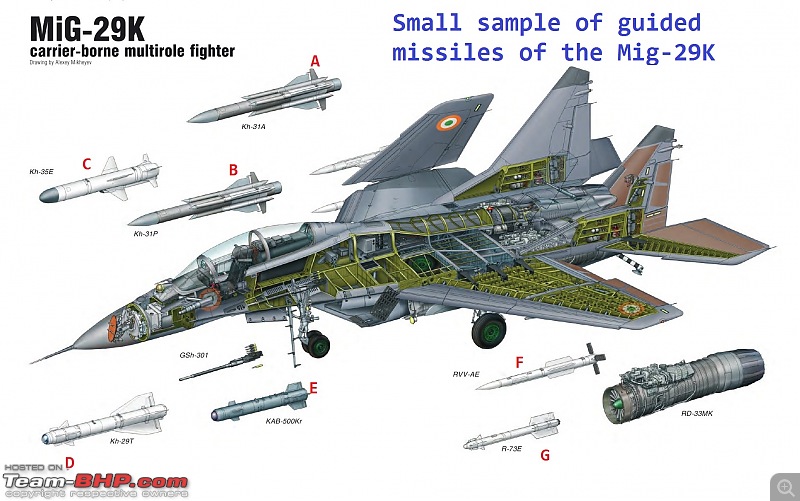 Photo 12D: (A) Kh-31A - Anti-ship radar guided missile, range 50 kms in sea-skimming mode (B) Kh-31P - Anti-radar guided missile, range 110 kms, Speed 2100 kmph; used for destroying enemy radars (C) Kh-35 - Anti-ship radar guided sea skimming missile, range 130 kms, war head ~145 kgs, cost ~Rs 3 crores (D) Large ground attack missile, TV guided, range 10 to 30 kms, warhead 320 kgs; used against large ground targets needing precision attack - buildings, bridges, bunkers, communication centres, command centres etc (E) 500 kg Glide Bomb with electro-optical guidance system that slaves the bomb to the target designated by the pilot; range of several kms. (F) RVV-AE or R-77 radar guided long range air to air missile, range 80 kms to 110 kms; also has the ability to shoot down precision guided missiles & cruise missiles (E) Short range/ medium range heat seeking dog fight missile. 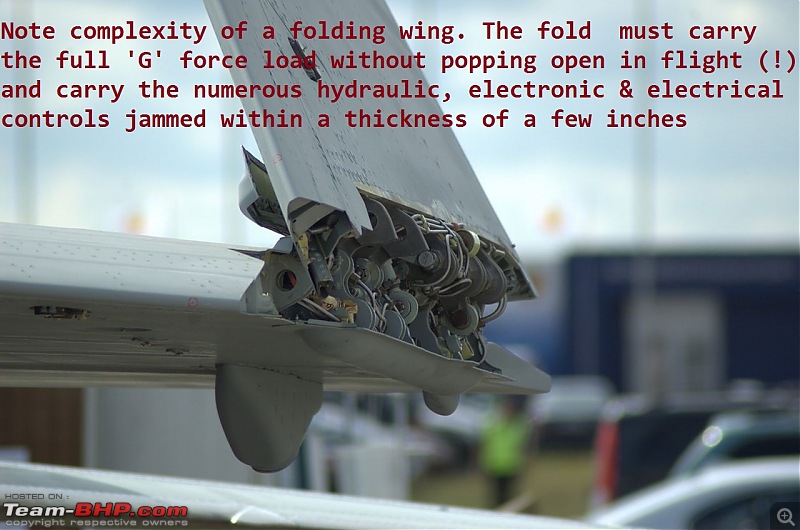 Photo 12E. 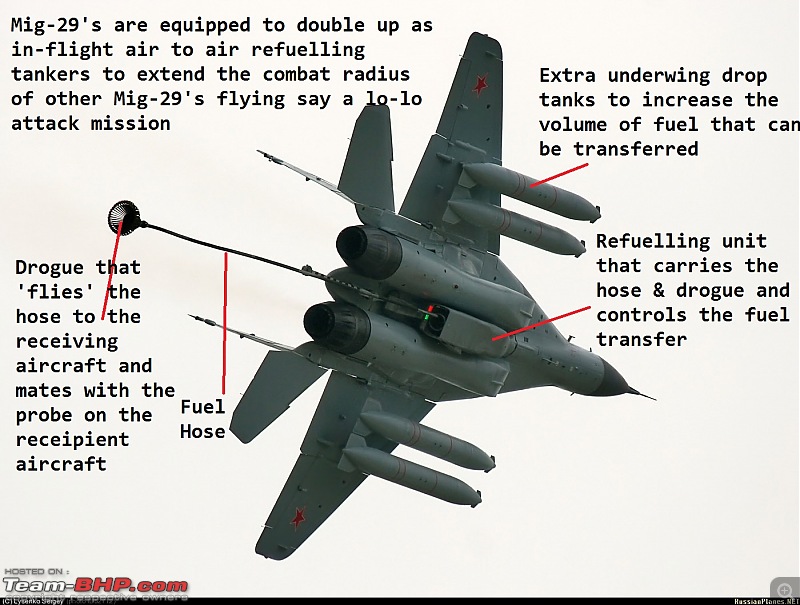 Photo 12F Photo Source RussiaPlanes.net Tomorrow……. 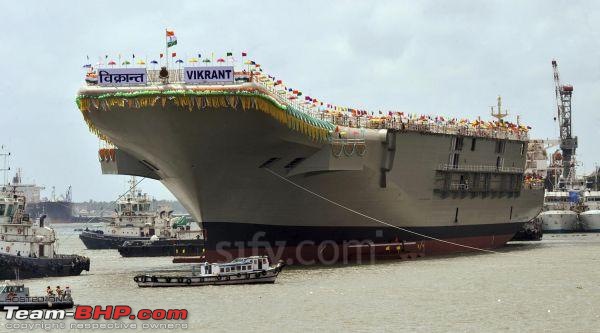 Photo13A: INS Vikrant in a new avatar - keel laid down in February 2009 and hull launched in August 2013. This design work started with earnest in 2003. This is a Indian designed and built warship and the largest and most complex we have attempted to date. It is the result of half a century of progressing in steps in ship building & then ship design. The design work has been done by the Navy itself. There is a lesson here for DRDO of the benefits of steady progression instead of bombastic projects that appeal to the politicians and scientists and then never see the light of day after consuming billions. As is to be expected the complexities of design and integration are many. The ship is 3 years behind the original schedule but is nevertheless expected to commission (ie join the fleet) in 2018. You can read on the Navies ship building story here http://www.team-bhp.com/forum/commer...ahmaputra.html 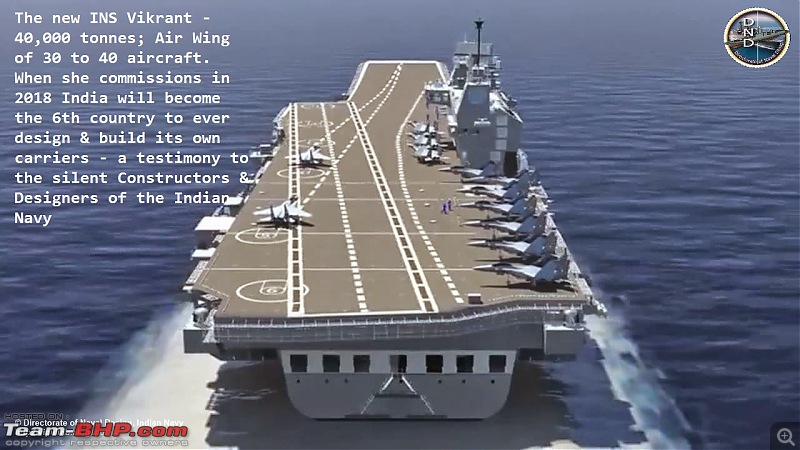 Photo 13B:Specifications - Full load displacement 40,000 tonnes; Length 262 metres (860'), Beam across flight deck 60 metres (200'), Flight deck area ~10,000 sq metres; Powerplant 4 LM2500 General Electric gas turbines generating 100,000 shp; Maximum stated speed 28 knots (52 kmph); Aircraft Wing ~40 Mix of Mig-29K multi-role fighters, Kamov Ka-31 Airborne Early Warning choppers and Sea King anti-submarine & anti-ship helicopters; 40 aircraft may be a maximum possible number and a more practical size may be 34 or so. Armament 4 dual purpose (ie anti-air and surface) rapid fire 76mm guns, undisclosed number of 30mm Close In Weapon Systems (gatling guns for last ditch anti-missile & aircraft defence that fire 60 shells per second in short bursts) and Barak SAMs. Photo Source Indian Navy 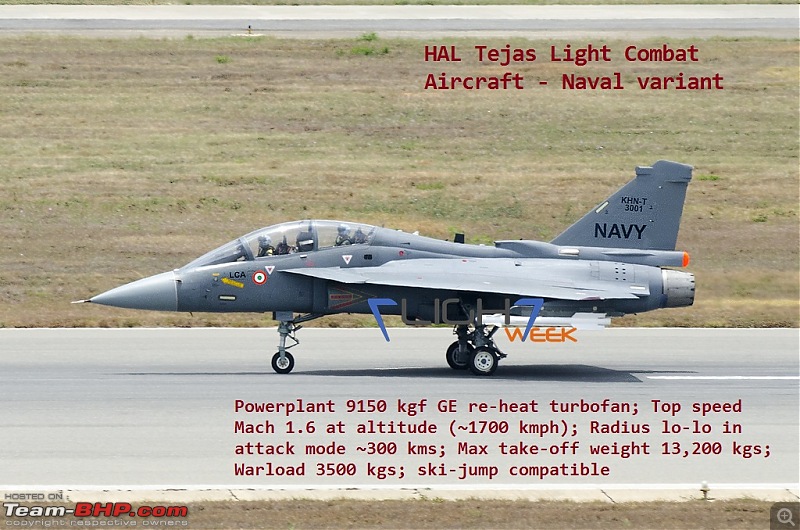 Photo 13C: The Navy has ordered 6 of the Naval variant of the Tejas LCA and has expressed an interest in acquiring 40. The aircraft continues to be under test and evaluation. It will be a signal day for Indian aviation when a squadron of Tejas LCAs embark on the new INS Vikrant. Not writing in detail on the Tejas here - that should wait till it enters full squadron service. For those interested a lot can be read on Wikipedia. As a nation we have done well for our indigenous effort in aerospace but continue to stumble heavily in aeronautics. Photo Source Flight Week 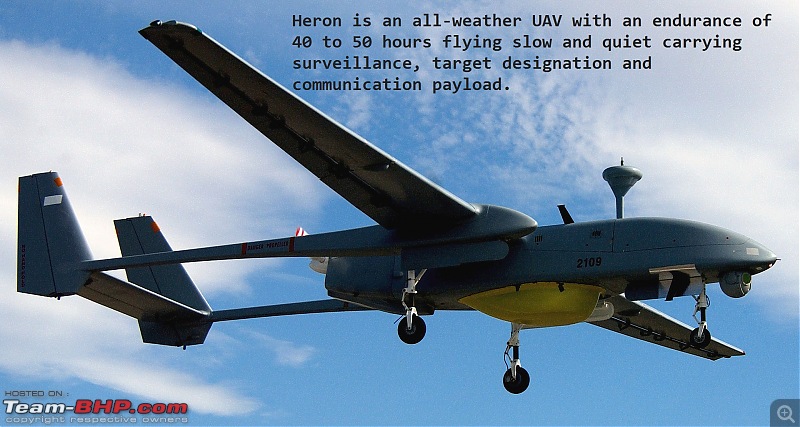 Photo 13D: Aircraft or missile or robot? - the Heron UAV (Unmanned Aerial Vehicle) from Israeli Aircraft Industries. The Navy operates 2 squadrons of UAVs for reconnaissance, forward air control, target designation and maybe electronic countermeasures. Is this the future of Naval Aviation 30 years hence? In 2050 will we have UAV Carriers like we have aircraft carriers today? - I don’t know the answers. It is most likely that medium to large ships will carry UAVs as a part of their normal package like they carry helicopters today. In fact that is already happening. Most probably it will be a mix of manned aircraft & helicopters and UAVs. Photo Source Wikipedia 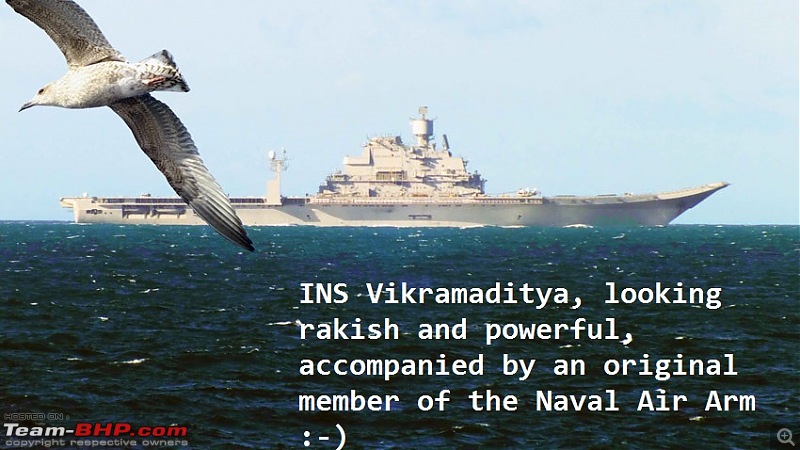 Photo 13E: Finis References: Books published or supported by the Indian Navy Blueprint to Bluewater; The Indian Navy 1951-65 by Rear Admiral Satyendra Singh; Lancer Publications (part of the official history of the Indian Navy) Transition to Triumph, Indian Navy 1965 to 1975 by Vice Admiral GM Hiranandani; Lancer Publications, 2000 (part of the official history of the Indian Navy) (Photo Source marked $$) The Indian Navy, An Illustrated History; Published by Naval Headquarters, 1989(Photo Source marked $$) The Indian Navy, a Photo Essay by Rear Admiral Raja Menon; Published by Naval Headquarters, 2000(Photo Source marked $$) 'Fly Navy', An Illustrated History of Naval Aviation by Pushpinder Singh; The Society for Aerospace Studies, 2006 (Photo Source marked @@) Golden Jubilee, INAS 310, Cobras; Published by INAS 310, Indian Navy (Photo Source &&) Other Books Carrier Aviation, Air Power Directory; AIR Time Publishing 2001 (photo Source marked ##) The Encyclopedia of World Sea Power by Chris Bishop; Published by Crescent Books 1988 (Photo Source marked %%) Classic Warplanes, BAe Harrier by Mike Spick; Published by Salamander Books 1988 (Photo Source++) The Encyclopedia of Modern Military Aircraft; General Editor Paul Aden; Publisher Amber Books, UK, 2004 Jane's Mikoyan Mig-29; Author Jon Lake, Publishers - Harper Collins, UK, 1997 Last edited by V.Narayan : 17th May 2015 at 09:31. |
| |  (74)
Thanks (74)
Thanks
|
| The following 74 BHPians Thank V.Narayan for this useful post: | Abhinav V, abishek2222, addyhemmige, aditya101, agspins, Akshay1234, akshay380, amit_purohit20, an_and, arakhanna, ariesonu, autoskooll, avishar, AVR, ayankm, BLACNWYTE, blahman, carrazy, czar6502, DeadlyD, Dennis, dhall_gagan, Diesel_convert, digitalsuresh, DragonHawk, drmohitg, embee, for_cars1, Foxbat, Fuldagap, Gannu_1, girishglg, gschandra, GTO, HappyWheels, iamendangered, Insearch, ir458, JoseVijay, Kairalee, Khodays, khoj, kunaldhami, kutts, lancia_fanboy, Lobogris, manuc, Maverick_4662, moralfibre, mpksuhas, Myth_sx, Naztone, NetfreakBombay, nilanjanray, peterjim13, phamilyman, psispace, quickdraw, R2D2, raghu.t.k, Rahul Bhalgat, sagarpadaki, Scarlet_Rider, Shreyans_Jain, skanchan95, SmartCat, sooshan, SR71-Blackbird, sridhar-v, SS-Traveller, sun_king, wbd8779, yesyeswe, Zubin21 |
| | #5 |
| Team-BHP Support  | Re: Indian Naval Aviation - Air Arm & its Carriers Mod note: Thread moved to Commercial Vehicles in India section. Thanks for sharing this brilliant one. |
| |  ()
Thanks ()
Thanks
|
| | #6 |
| Senior - BHPian Join Date: Apr 2011 Location: Pune
Posts: 1,188
Thanked: 1,998 Times
Infractions: 0/1 (5) | Re: Indian Naval Aviation - Air Arm & its Carriers Wonderful and exciting description! Thanks V. Narayan. I have just had a quick glance on this long and informative description. Will go through this in detail in the nights. It takes vast and enormous efforts and money to build and operate such a fleet. Also, it takes a good amount of planning and stratetic work to arrive at the decisions from time to time. This makes me think: If the world is not so hostile, if the nations/persons do not pose threats to other nations, if there is more emphasis on diplomacy and less on combat, all these efforts and money could have been diverted to education and empowerment of poor and underprivileged. And that would have made the world much much better in terms of safety, security, cleanliness, environment. Of course, it is not so. Once upon a time, our leadership believed in maintaining good intentions and relations towards the other nations, to minimise (or even eliminate) the defence expenditure in favor of growth. But in the course of time, we were not left with this choice. I appreciate the efforts by our armed forces and their professional capability. I also appreciate that our armed forces align themselves with the democratic mould of our nation and do not try to interfere the political or business environment. Salute to our armed forces..... |
| |  (2)
Thanks (2)
Thanks
|
| The following 2 BHPians Thank Rahul Bhalgat for this useful post: | amit_purohit20, GTO |
| | #7 |
| Senior - BHPian | Re: Indian Naval Aviation - Air Arm & its Carriers Lovely thread, rated 5 stars. Thanks for initiating this. Have close association with our armed forces. P.S. Hope posters don't violate opsec. |
| |  ()
Thanks ()
Thanks
|
| | #8 | |
| BHPian Join Date: Oct 2013 Location: KA21
Posts: 533
Thanked: 2,025 Times
| Re: Indian Naval Aviation - Air Arm and its Carriers As always very informative thread sir! thoroughly enjoyed reading it and some of the information about INS Vikrant is pretty much new to me. Quote:
Last edited by DragonHawk : 18th May 2015 at 12:34. | |
| |  (4)
Thanks (4)
Thanks
|
| The following 4 BHPians Thank DragonHawk for this useful post: | amit_purohit20, DeadlyD, Foxbat, Rahul Bhalgat |
| | #9 | |
| BHPian Join Date: May 2008 Location: Bay Area, CA
Posts: 75
Thanked: 157 Times
| Re: Indian Naval Aviation - Air Arm and its Carriers A fantastic write up with some images that I've never seen anywhere else. Quote:
Finally, I'd like to add just one small correction. While Sea Eagle anti-ship missile is technically still in service, is not carried on any platforms since it (or more accurately, its rocket booster) has reached the end of its lifespan. They are still stocked for use in an emergency though. | |
| |  (4)
Thanks (4)
Thanks
|
| The following 4 BHPians Thank vivtho for this useful post: | amit_purohit20, Foxbat, Rahul Bhalgat, V.Narayan |
| | #10 |
| BHPian Join Date: Aug 2014 Location: DL/GBN
Posts: 222
Thanked: 315 Times
| Re: Indian Naval Aviation - Air Arm & its Carriers Thanks V. Narayan for the wonderful and exciting description about Indian Navy! I think that these kind of post/threads help us understand the true nature and capabilities of our armed forces. Helps us to update our information as well. Hope to receive and read more information on Indian Army and India Air Force. |
| |  ()
Thanks ()
Thanks
|
| | #11 | |
| Senior - BHPian Join Date: Apr 2011 Location: Pune
Posts: 1,188
Thanked: 1,998 Times
Infractions: 0/1 (5) | Re: Indian Naval Aviation - Air Arm and its Carriers Quote:
Russia has been our trusted and consistent ally since long. If a western and an eastern neighbour calls war on us simultaneously, then I think, only Russia is in a good position to balance the situation in our favour. Rather, I would say that western and eastern neighbours are not calling war at a time because of our robust alliance with Russia. So, while making the deals, this needs to be given some weightage. Anyway, we do not have much choice. It has been mentioned in this thread that there are only 4 instances so far (other than our carriers) where an aircraft carrier has been sold by one nation to another. Usually, no one sells aircraft carrier to the other country. And Russia has agreed to give us a carrier when we do not have a huge trade with them like we have with China or USA. I think that USA and China are coming closer to India because of our market size and trade volume. Unlike USA or China, Russian companies have not much commercial interest in India to protect. So, if a country is selling us a carrier (when almost no one will sell) with not much trade interest and if this country is of strategic importance to us, we may not be able to have a say in every specification. There might be some specifications of the carrier that are classified. Besides few top officers and ministers, these specifications may not be known. To avoid any compromise in future, there is already a plan in place to design and build the carriers in India. And lastly, the above scenario makes us realize how important it is to have proper relations and a healthy amount of trade with foreign countries, especially with the neighbours if we do not want them to be hostile towards us. When the economies are linked, war / terrorism is not supported. So, if leadership devotes time and proactive efforts to have a strategic synergy with foreign countries, with our neighbours and their neighbours, we (especially the media) need to understand this instead of criticizing. Decision of foreign tours are not solely taken by one leader based on his / her wishes. It is the outcome of integration of long, systematic thought process in commerce, defence and foreign ministries along with the industrialists. Hundreds of officials with long experience and professional expertise and few ministers participate in this. A particular minister may not be seen in the front in such matters but he / she may be making a notable contribution by properly coordinating the thought process and decision making. These are my personal views indicating a possible scenario. If we have proper strategic relations with foreign countries along with a healthy trade and if we take bold steps (within the constitutional framework, without injustice to any section of society) to promote domestic manufacturing, then we are bound to make progress IMO. DragonHawk, my views may or may not differ from yours but we both have equally genuine concern and good intention towards the well-being of our nation and I appreciate your concern. Last edited by Rahul Bhalgat : 18th May 2015 at 16:41. | |
| |  (3)
Thanks (3)
Thanks
|
| The following 3 BHPians Thank Rahul Bhalgat for this useful post: | amit_purohit20, gschandra, Naztone |
| |
| | #12 | |
| BHPian | Re: Indian Naval Aviation - Air Arm and its Carriers Quote:
With our INS Vikrant II Slated for launch next week from the dry docks, and since we have cleared a sum of 30 crore for our next super carrier, the article is right on time. Salute you for this article Narayan. Let me come to my questions : 1. With CSL offering to build the next one in line after INS Vikrant II and since they have made a statement saying that it can be delivered within 4 years after the INS Vikrant II is delivered (Currently in construction) that is at about 2018; what is your take on this. Should we have a follow on order for the same? ( I assume they are talking about something that can be build in the same infrastructure, that would be again a carrier in the range of 40K displacement) 2. What is your take on the next carrier INS Vishal. The Govt has alloted 30 Crore for the same. On the same lines, what all should be the features of our next Carrier ? *From what I understand, it will be a CATOBAR super carrier with the new generations EMALS tech for fighter take off, and we also have an option for a nuclear powered engine for the same. 3. And last on the combination of fighter for the Naval Air Arm, We have Mig 29 KUB (Air Superiority, Multi Role Fighter) and Tejas Naval Variant in pipeline, shouldn't we look at the Rafale Naval Variants which are currently in service on Charles De Guelle. I am sure our Naval offices would have had a close review of them while they were in Goa last week for bilateral training exercise. * I hope these questions make sense, and these questions were formed from a select set of 10-12 questions I had in mind. So this is the top 3. | |
| |  ()
Thanks ()
Thanks
|
| | #13 |
| BHPian Join Date: Jul 2012 Location: Mumbai
Posts: 585
Thanked: 1,429 Times
| Re: Indian Naval Aviation - Air Arm & its Carriers This is a brilliant thread. I have a few friends in Navy and i always salute them whenever, and wherever we meet. You have taken crazy efforts to write all this down. Thank you so much. I would like to post some pics i took during the Navy Day celebration 2 years back. What a proud day it is. I love to watch Parades. Perfection at its best. 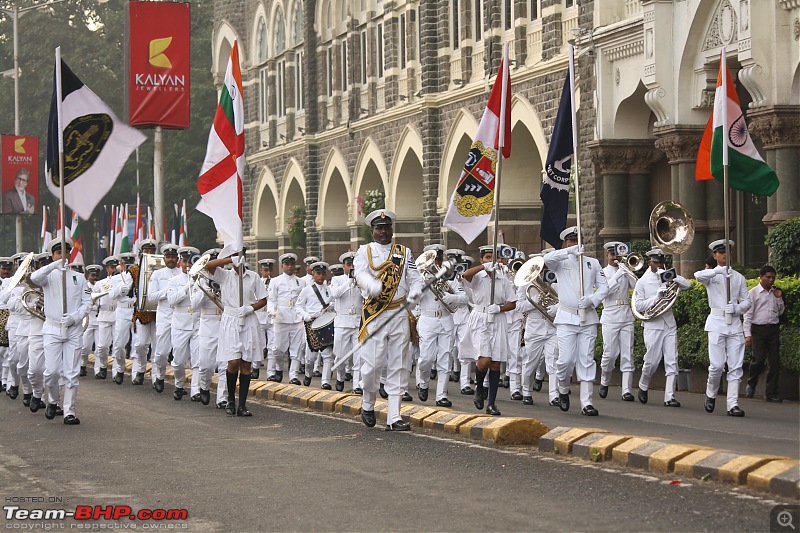 I think one of the best pics i have ever captured. 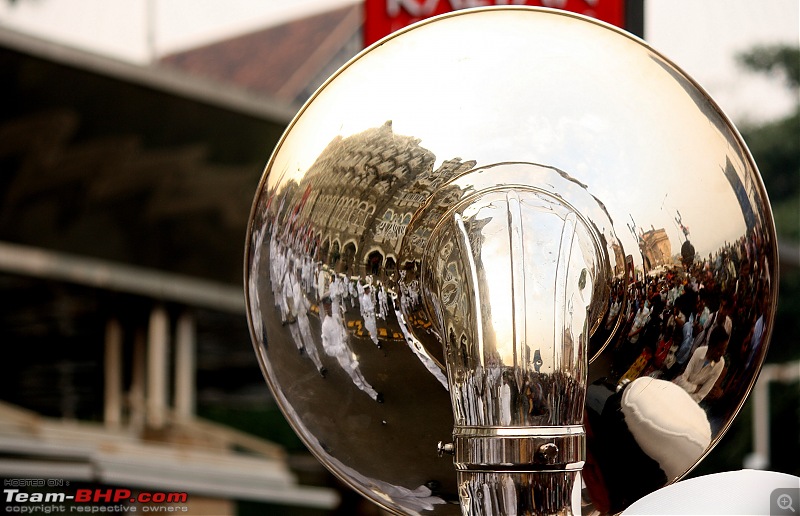 Navy personals showing a rescue operation 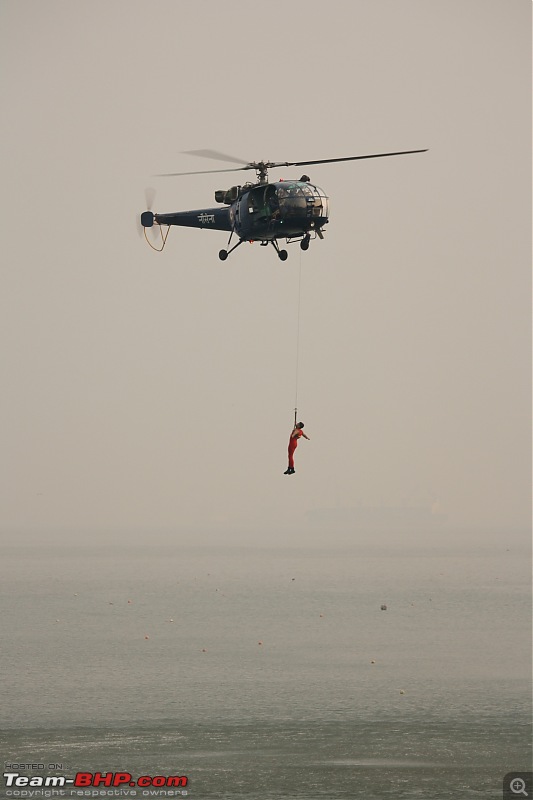 Men of Courage ! 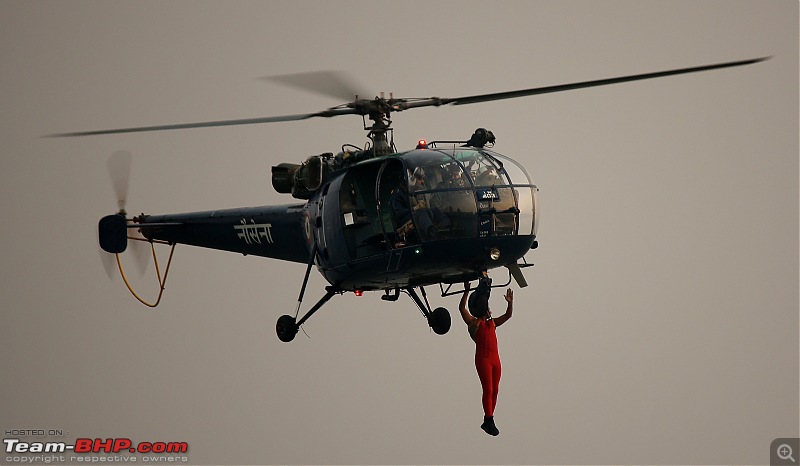 This was a huge chopper, The sound it made was music to my ears. 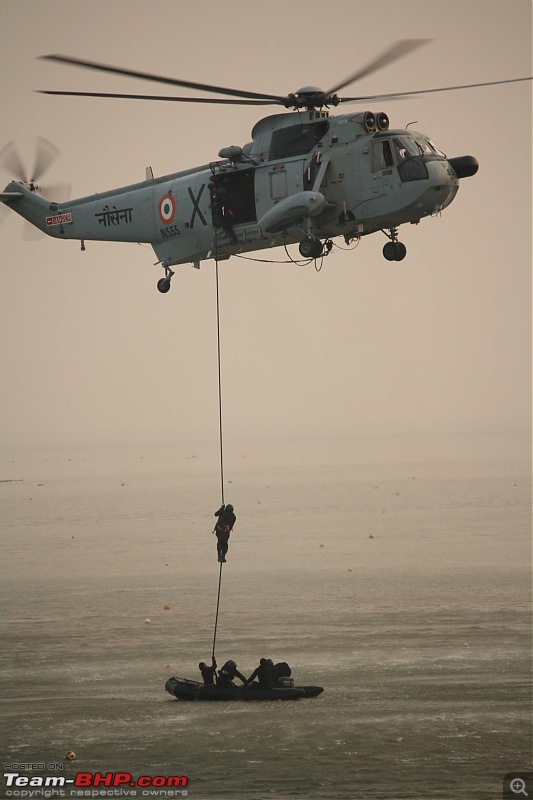 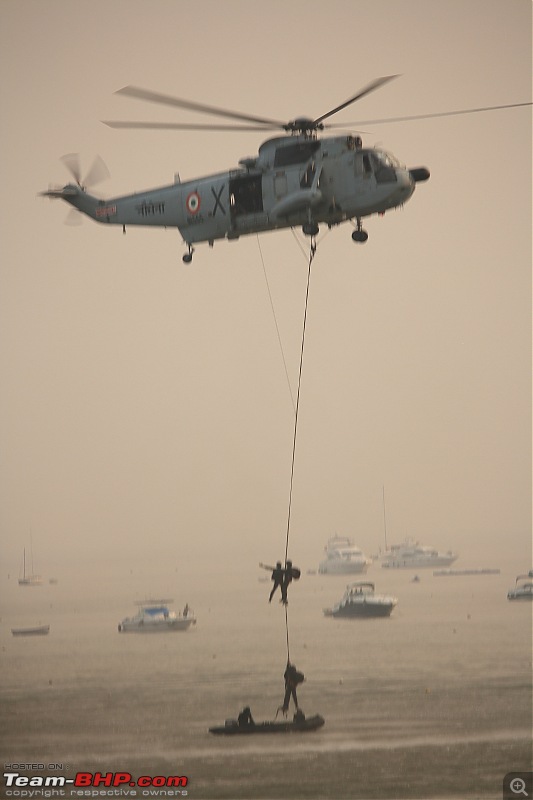 The final Fly Past 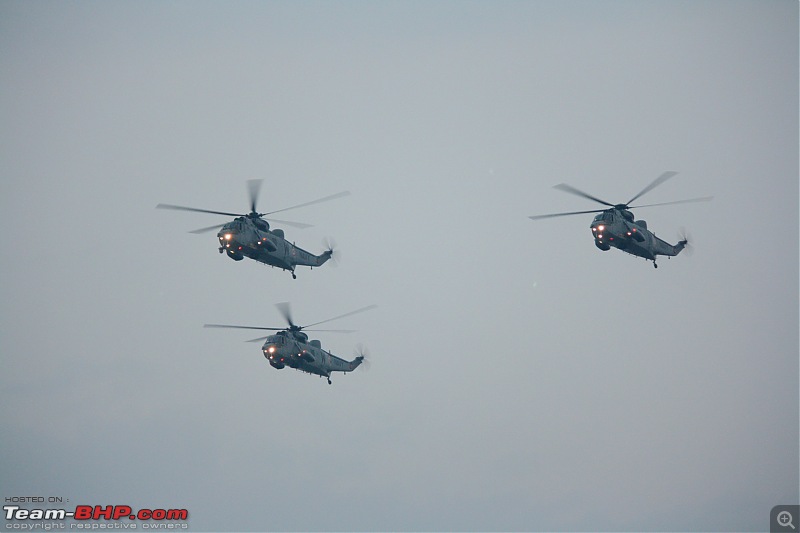 |
| |  (8)
Thanks (8)
Thanks
|
| The following 8 BHPians Thank Dieselritzer for this useful post: | amit_purohit20, arunphilip, carrazy, gschandra, JoseVijay, khoj, Scarlet_Rider, V.Narayan |
| | #14 |
| BHPian Join Date: Nov 2014 Location: KOLKATA
Posts: 41
Thanked: 130 Times
| Re: Indian Naval Aviation - Air Arm & its Carriers Another piece of fantastic story telling. Your posts are just wonderful in their presentation. Read through it in one go.The collection of pictures will be any collectors envy. I love the lines on the Dorniers, they are very underrated machines but pack quite a punch in their slim but versatile frames. I live near the Kolkata airport and love to see the Coast Guard and Navy Doniers take off and land. As for the Naval Dhruv, I think they are a wasted lot, the navy doesnt want them and they have their reasons, I would prefer HAL would stop pushing these birds and come up with a upgrade, a class above perhaps, the Dhruv was great as a pioneer in our aviation industry, gave us confidence in our own aircraft production and marketing. It's time HAL and others up their ante and come up with better next gen aircrafts and stuff as they have got their groundwork completed with the Dhruv and Tejas. I will wait for the day when he Indian Navy will have 2 CBG's and will be able to operate at sea without support from any shore based assets, Have true long range capability and will be able to provide logistics around the globe, that will be the true coming of age of our glorious Navy. Hope that day is not far off , but in the mean time i wish to thank you for this wonderful work and will want more of such articles. Regards Shantonob |
| |  ()
Thanks ()
Thanks
|
| | #15 |
| BHPian | Re: Indian Naval Aviation - Air Arm & its Carriers Simply a splendid array of pictures of a wing of the Indian armed forces I have to say. A quick history lesson on Indian Naval Prowess. Brilliant.. Jai Hind!! |
| |  (1)
Thanks (1)
Thanks
|
| The following BHPian Thanks autoskooll for this useful post: | V.Narayan |
 |


